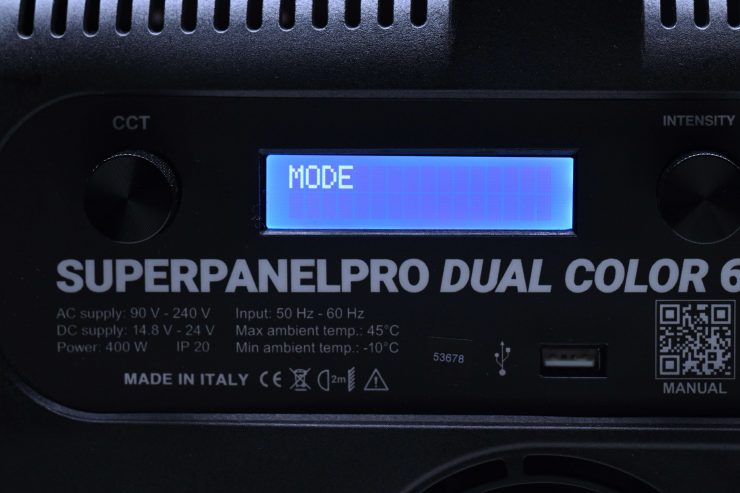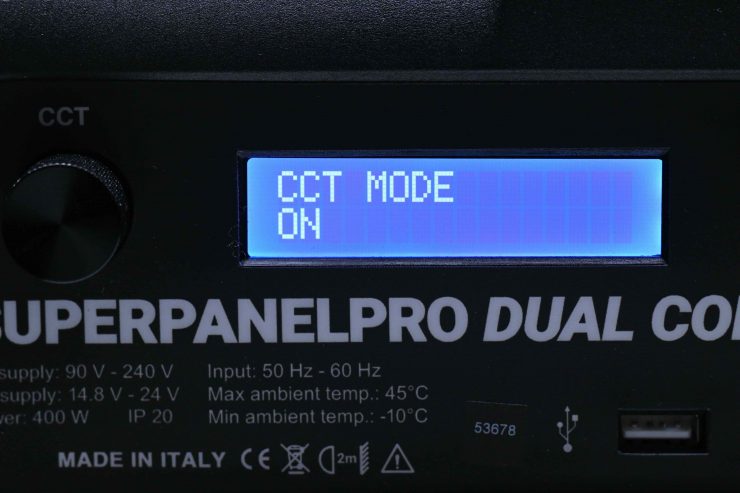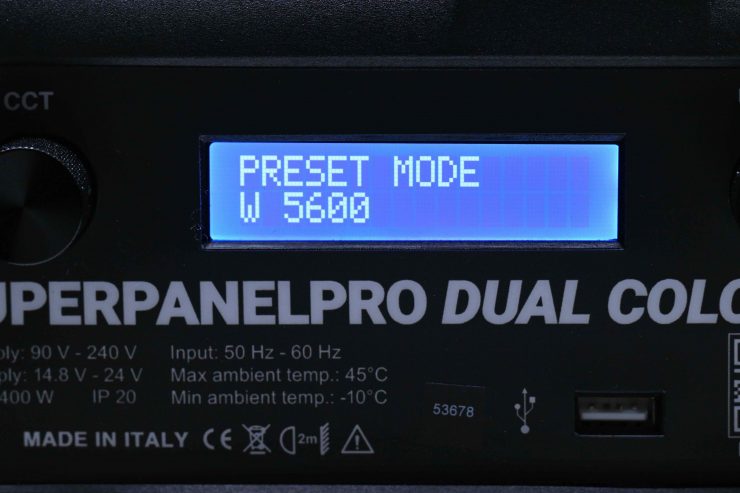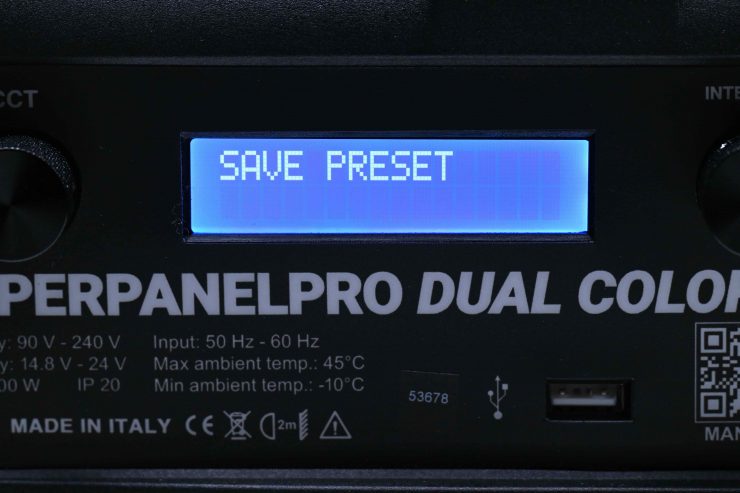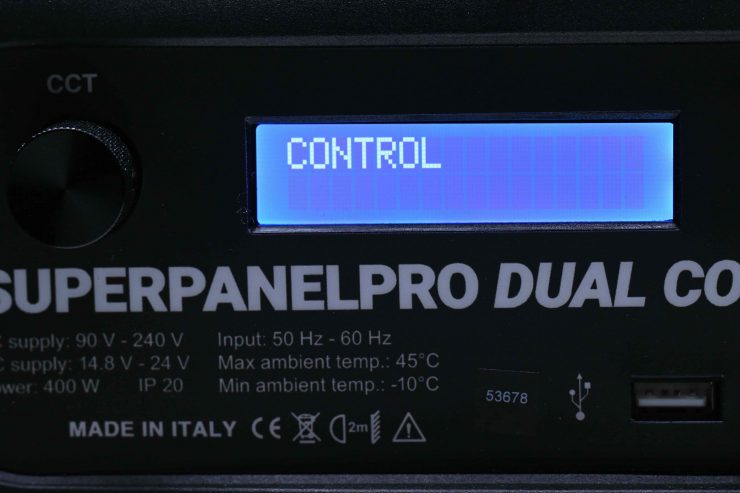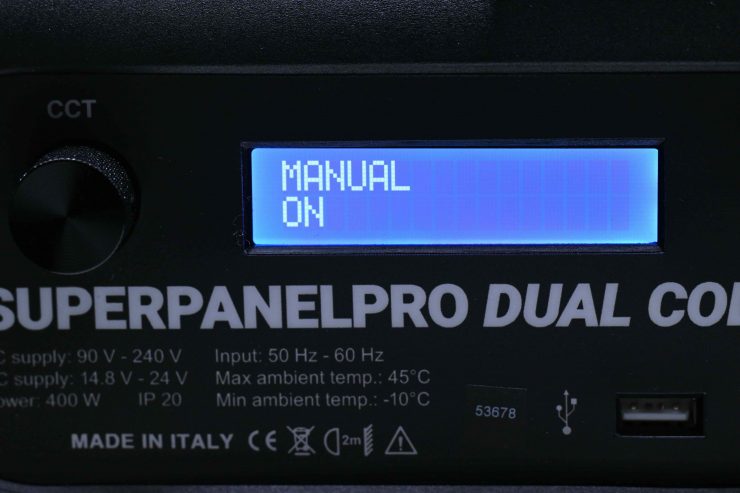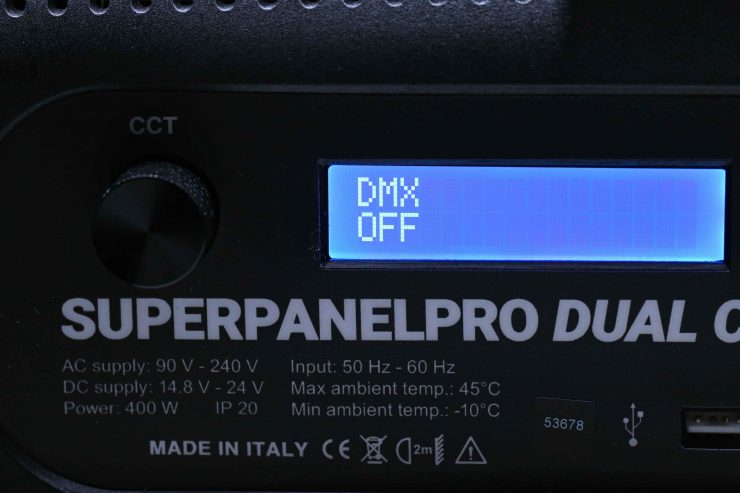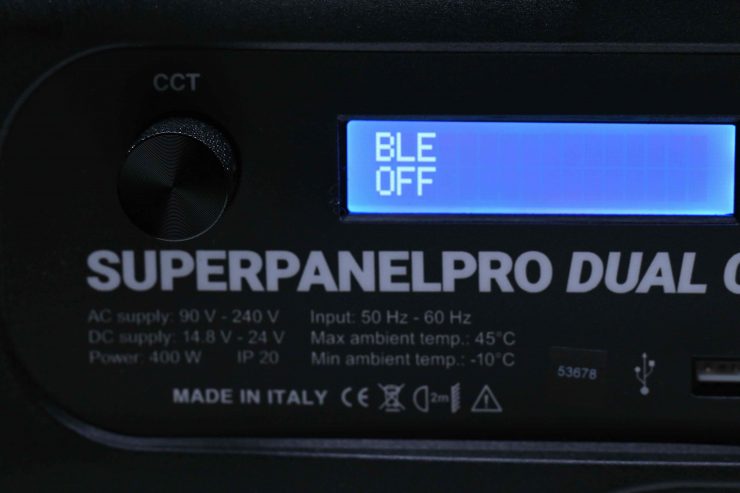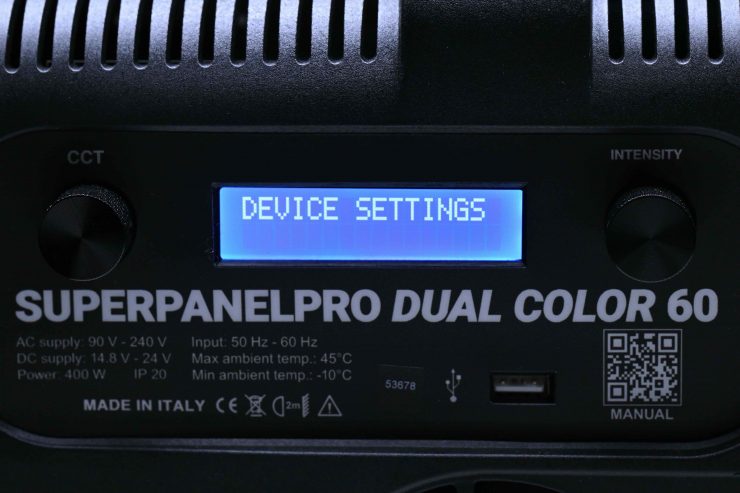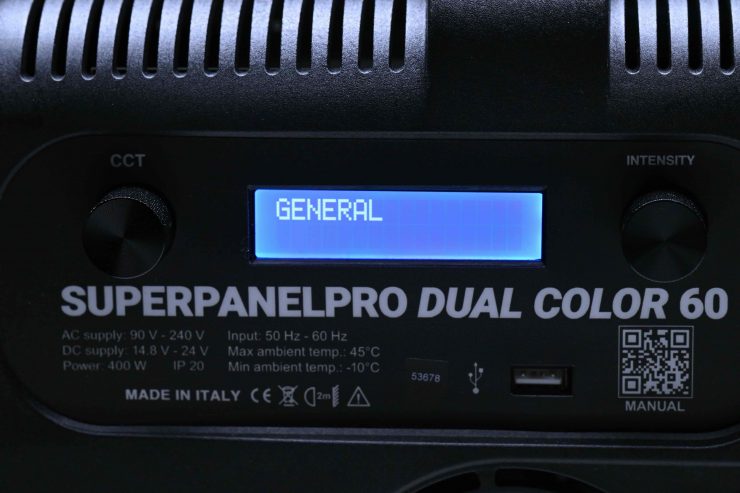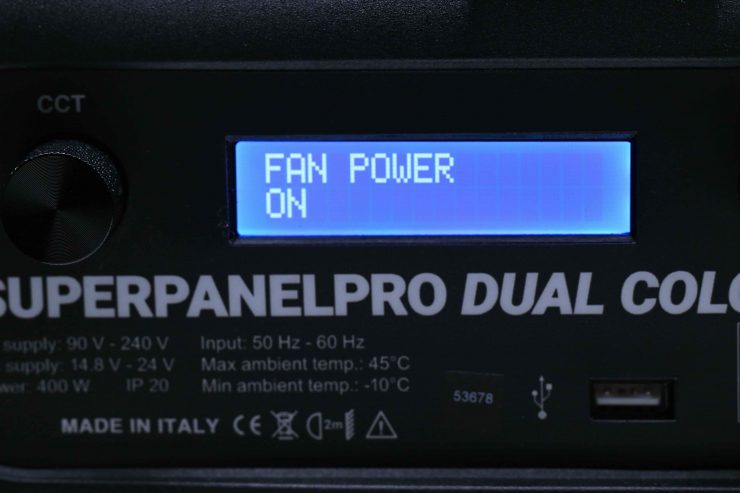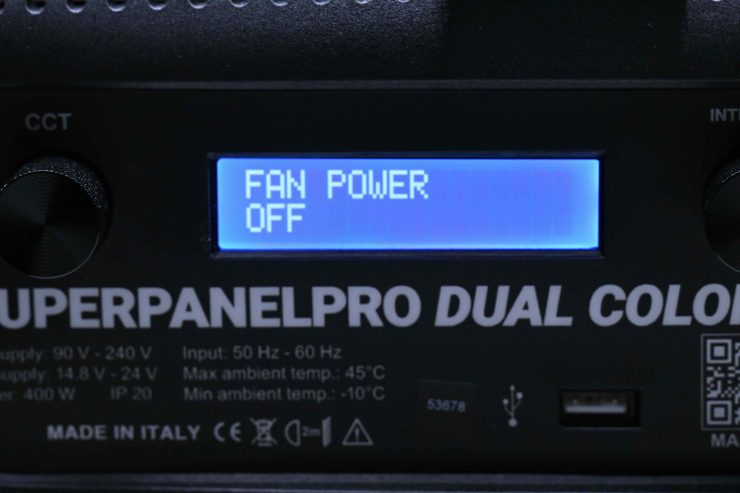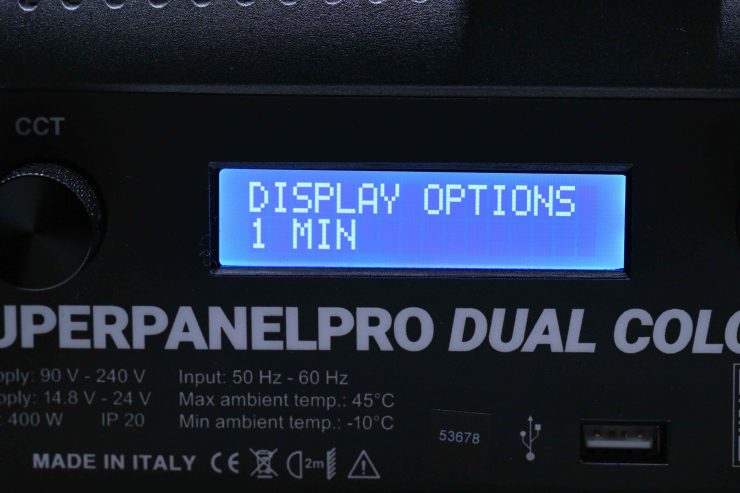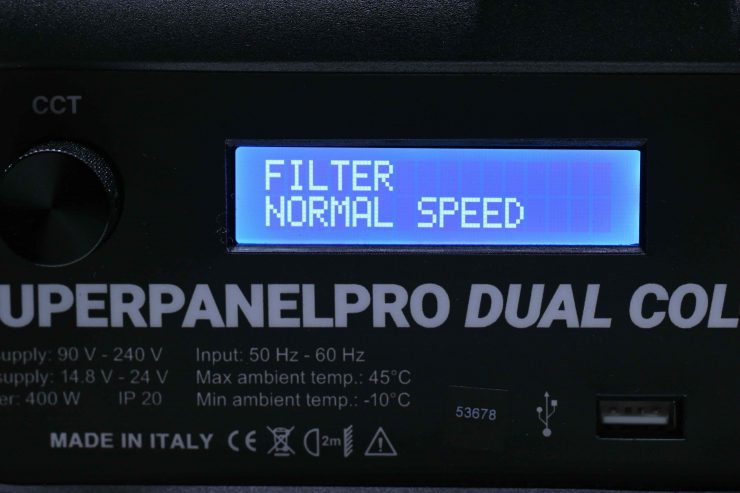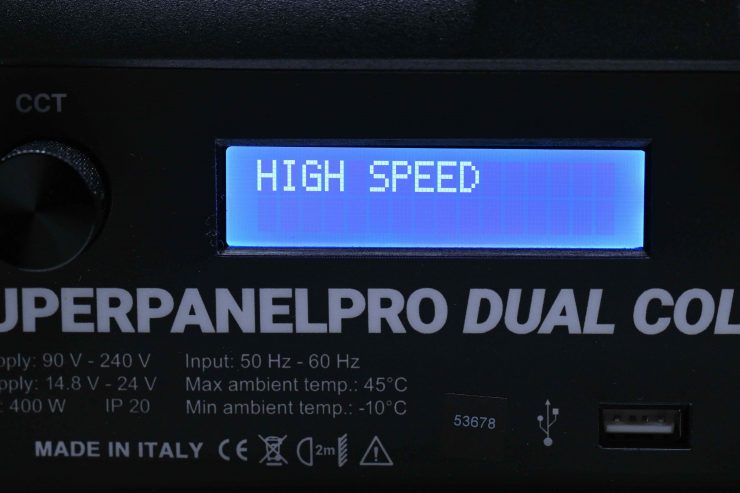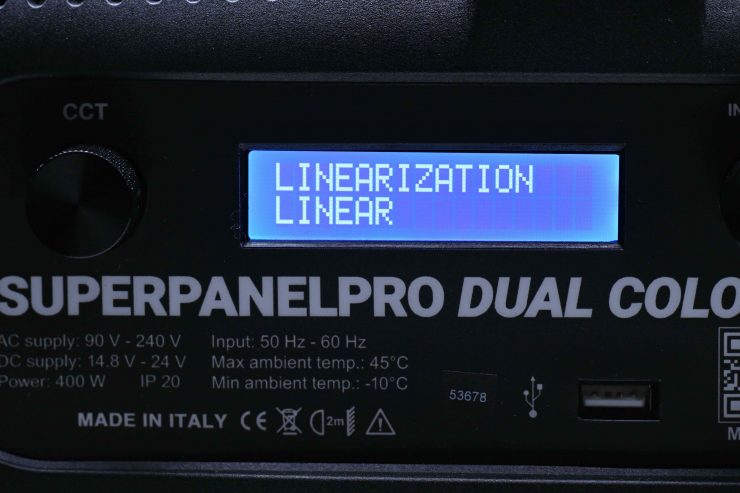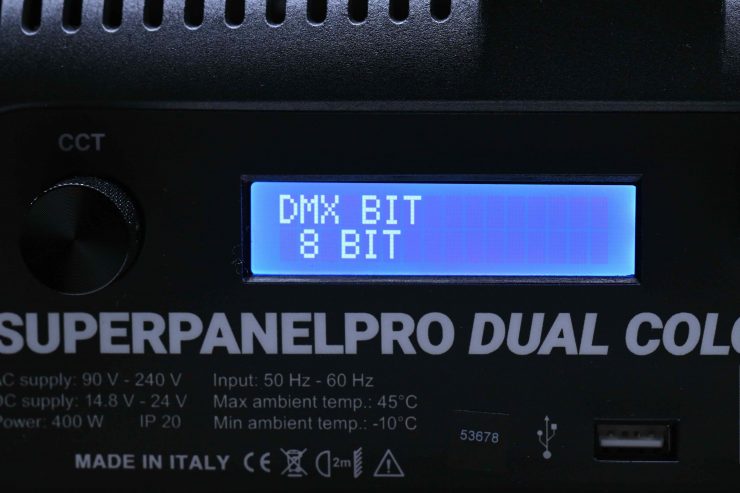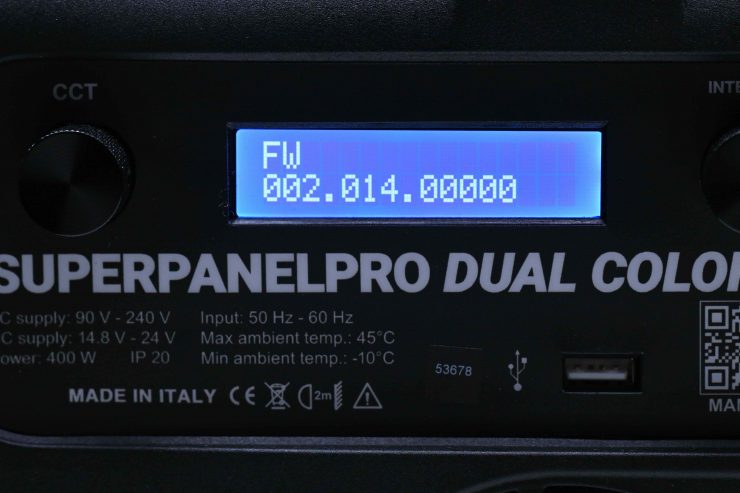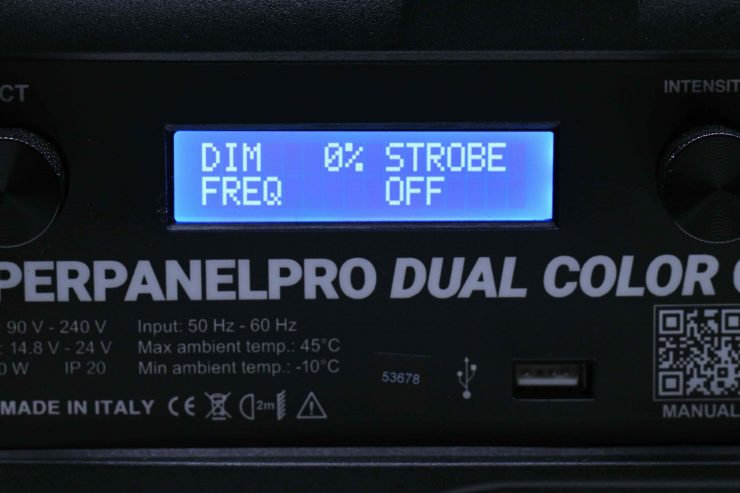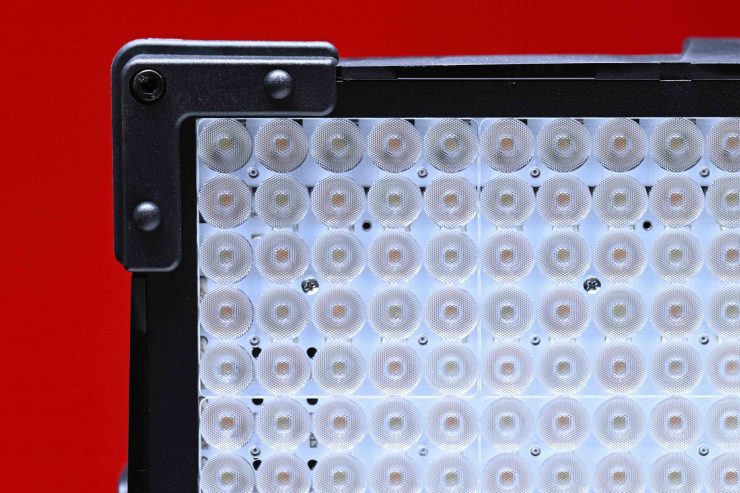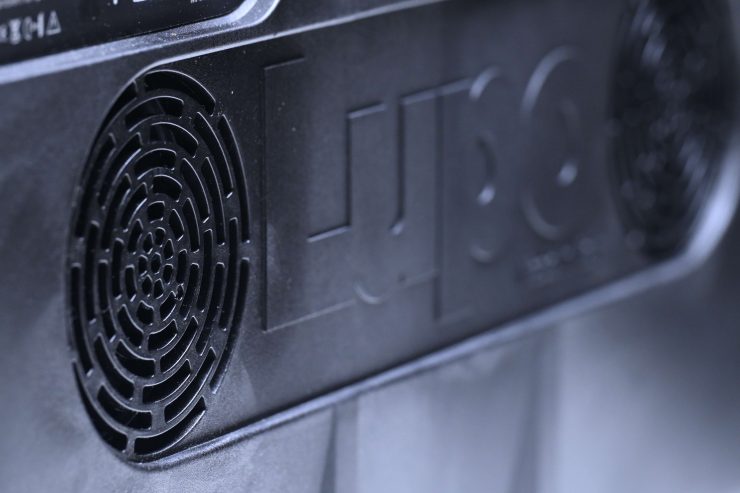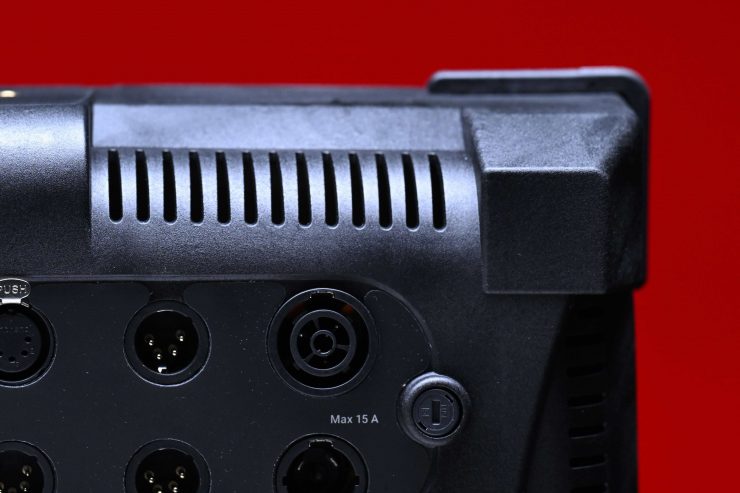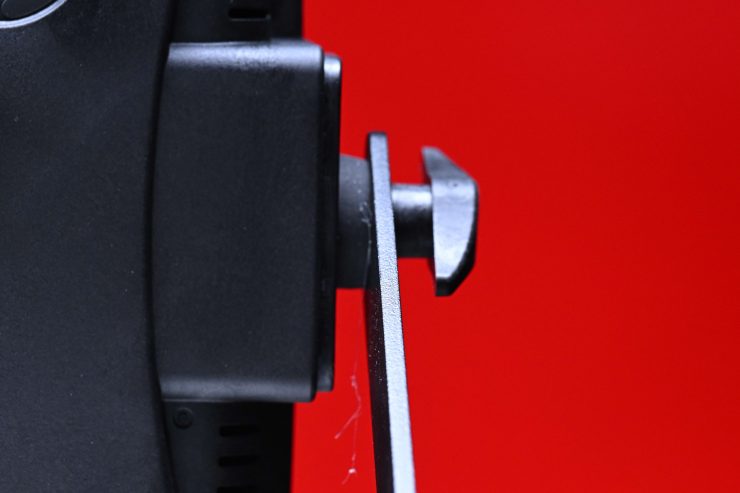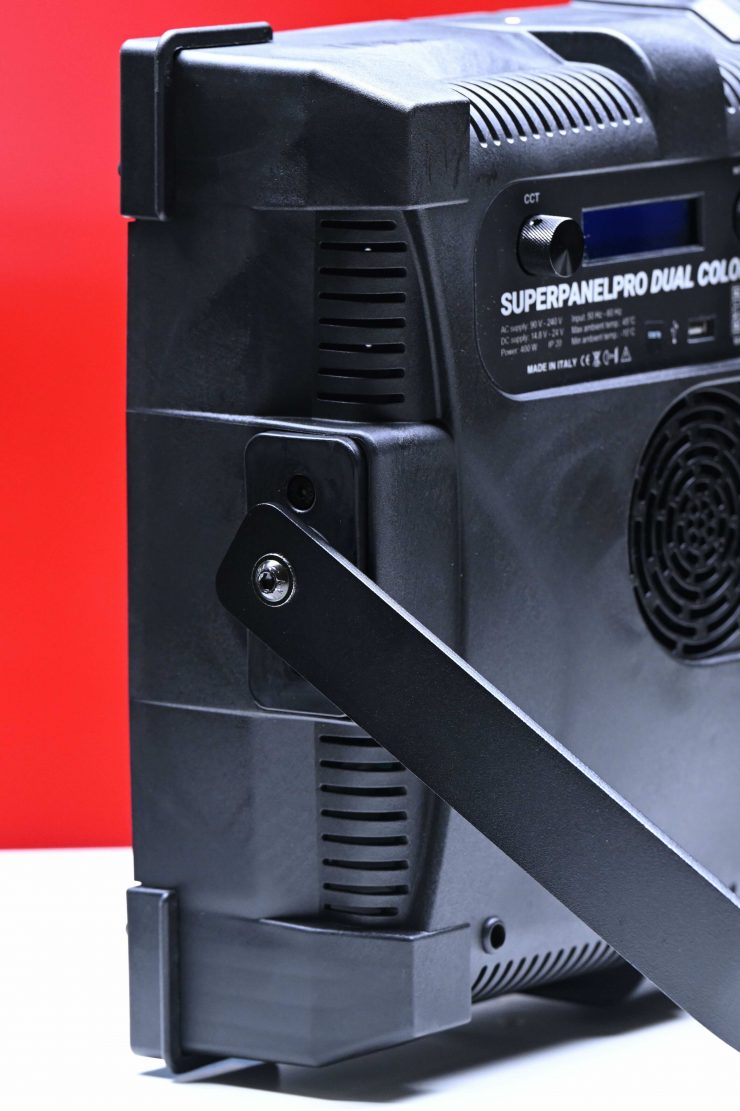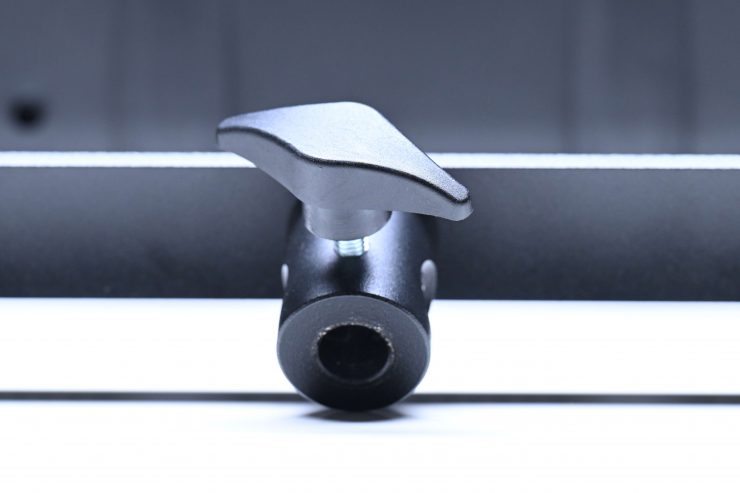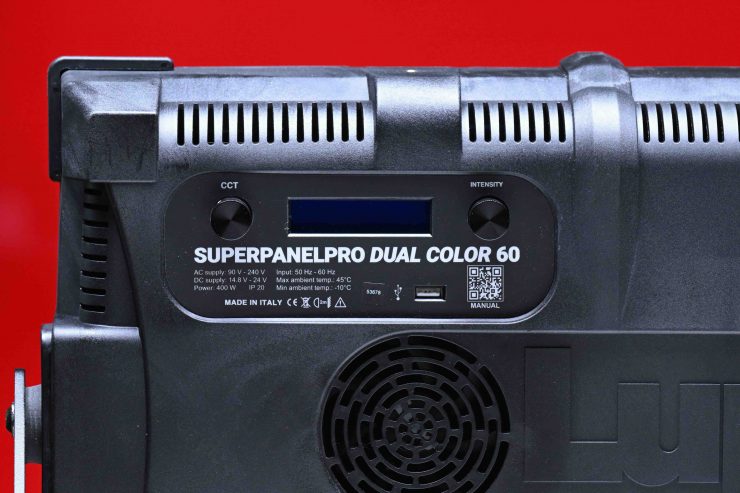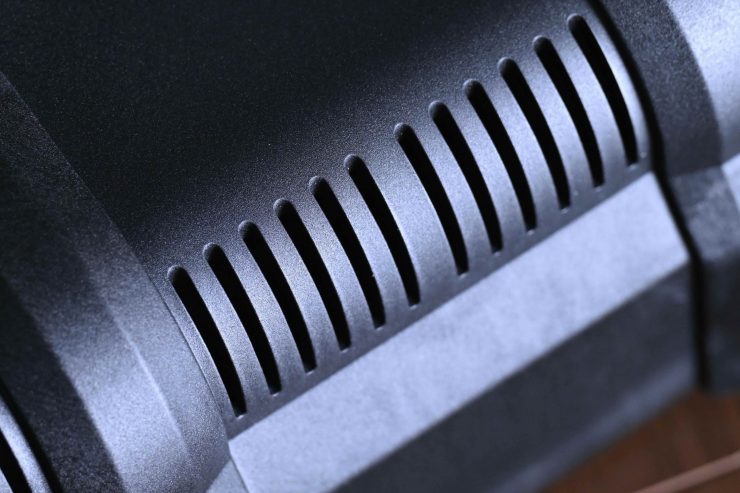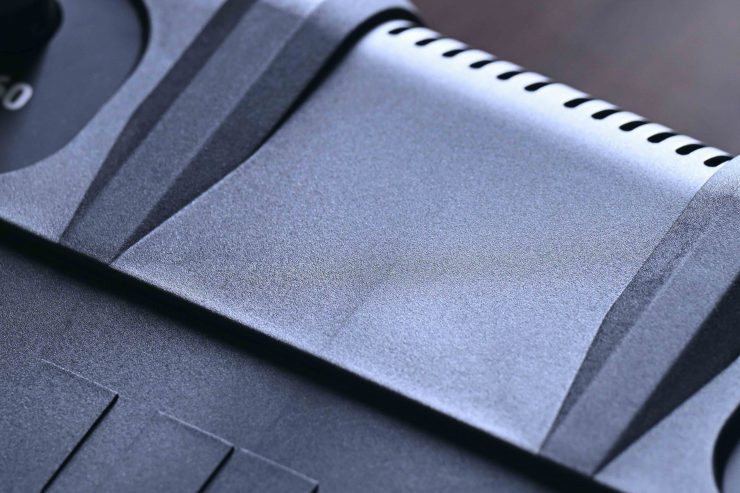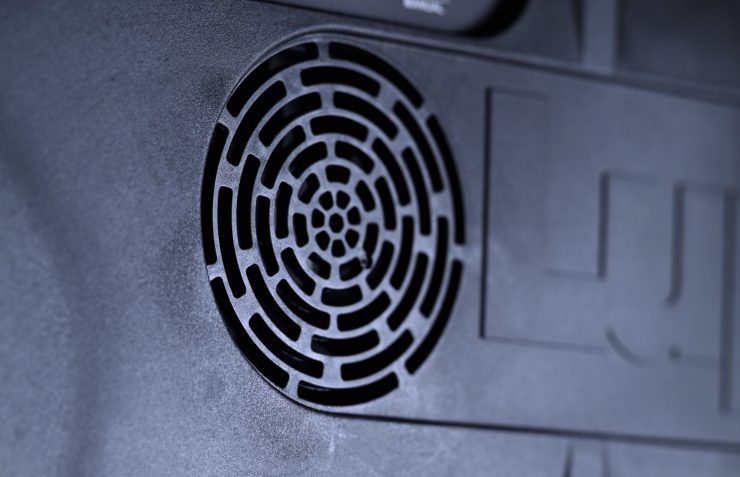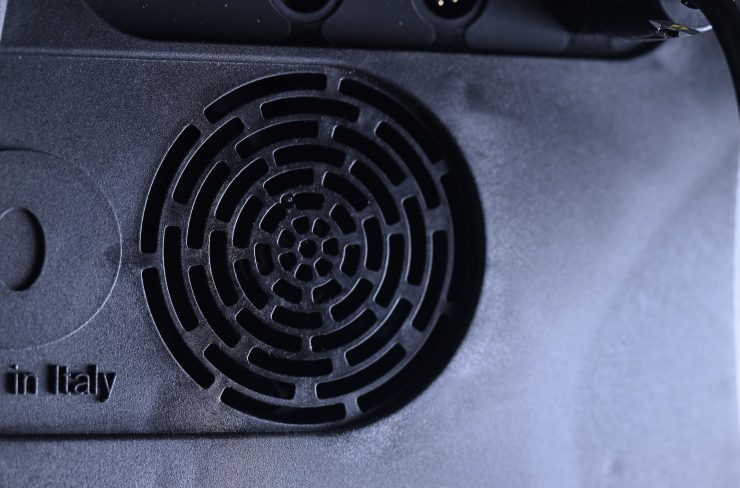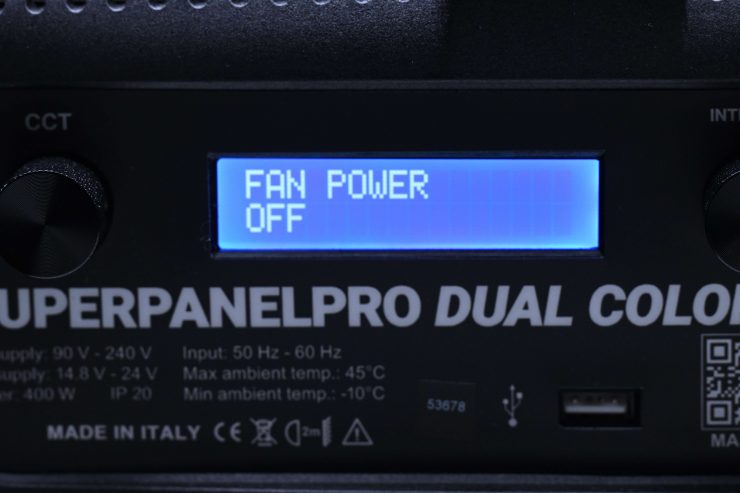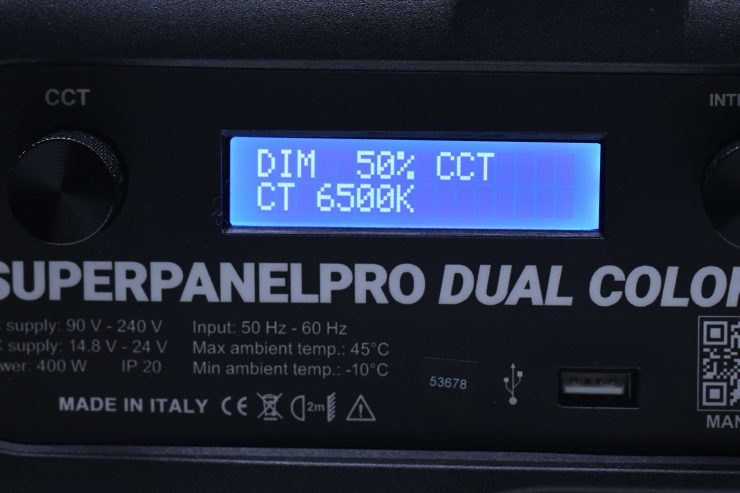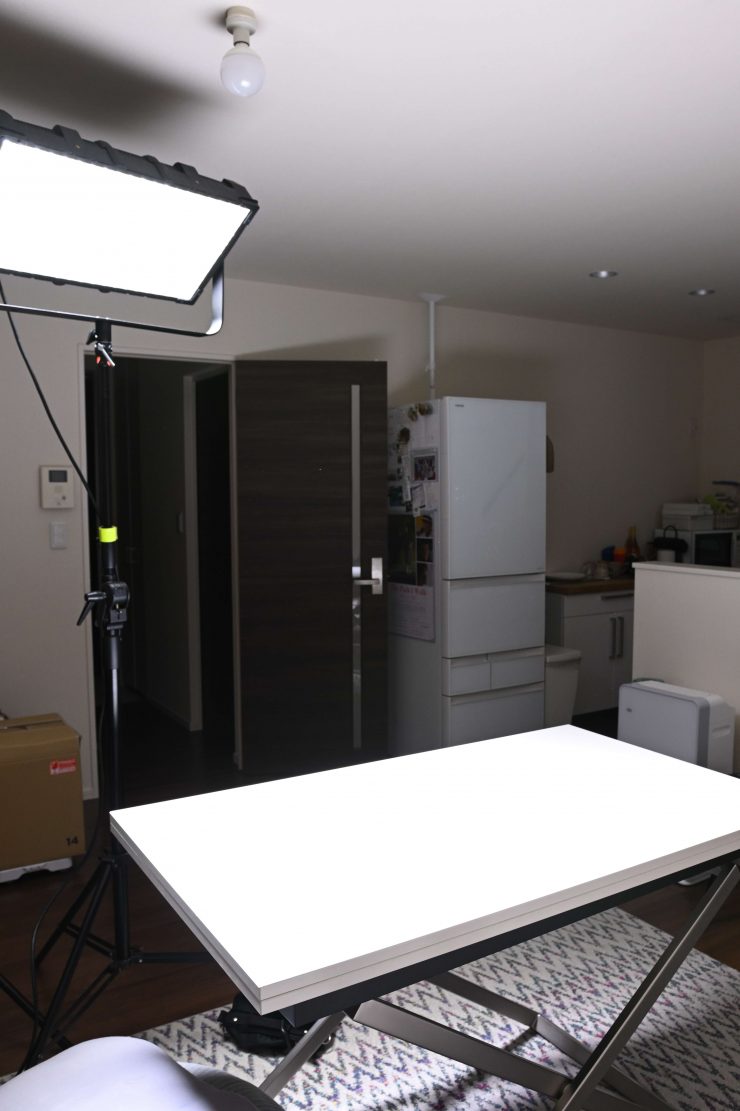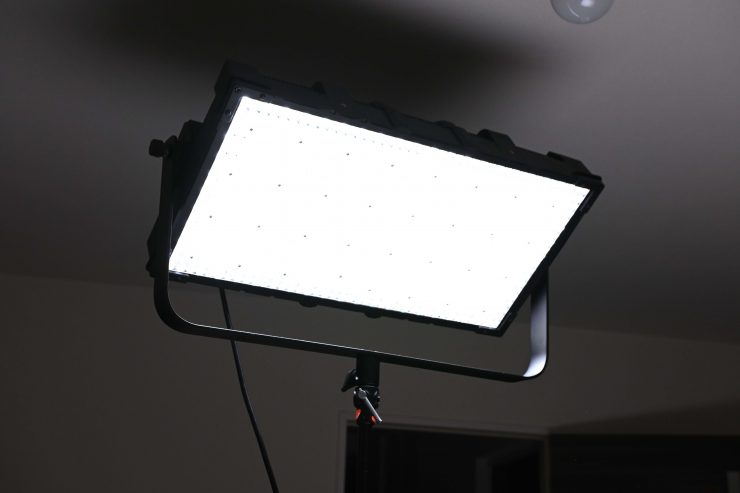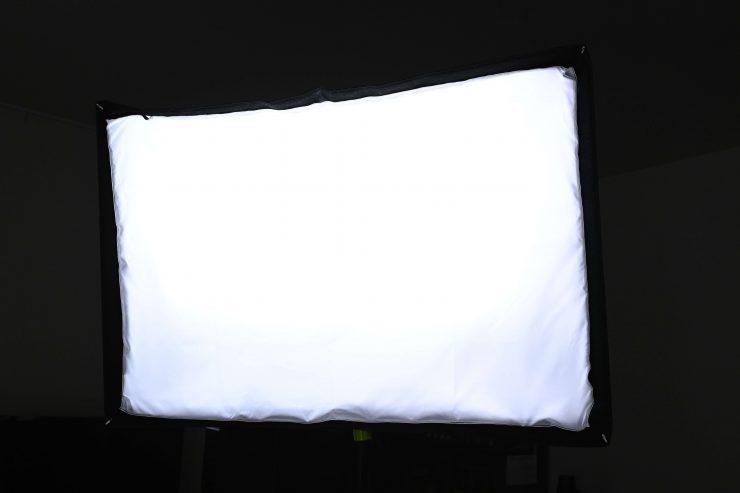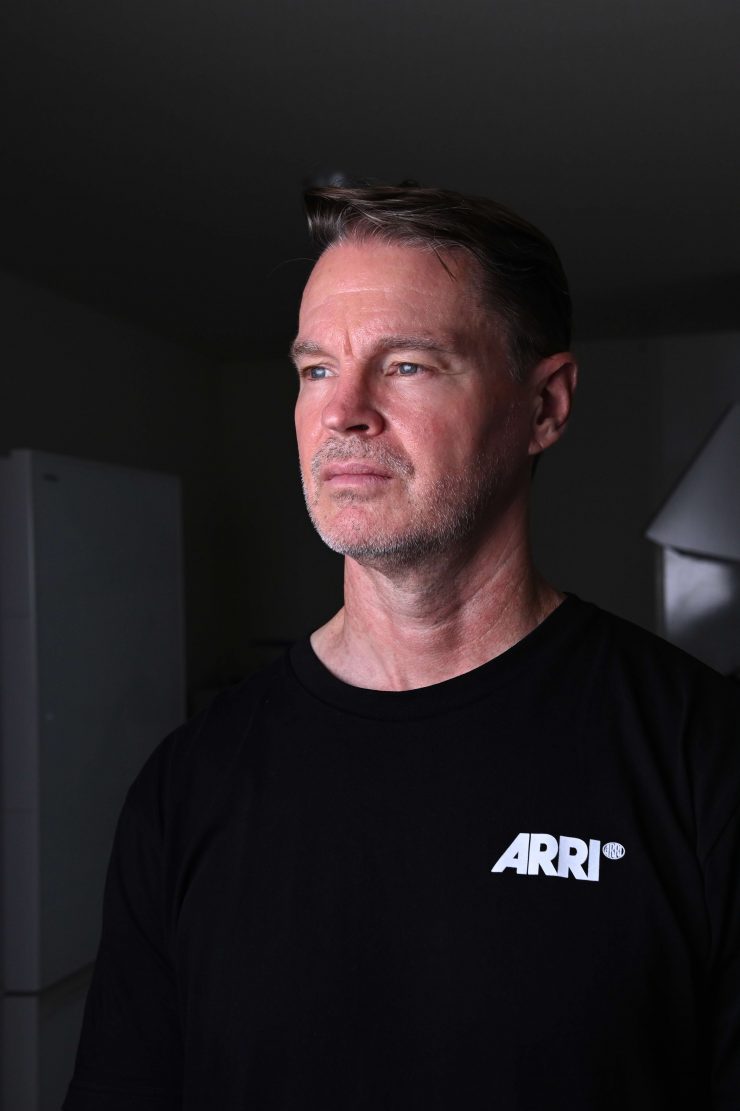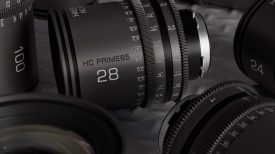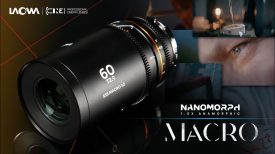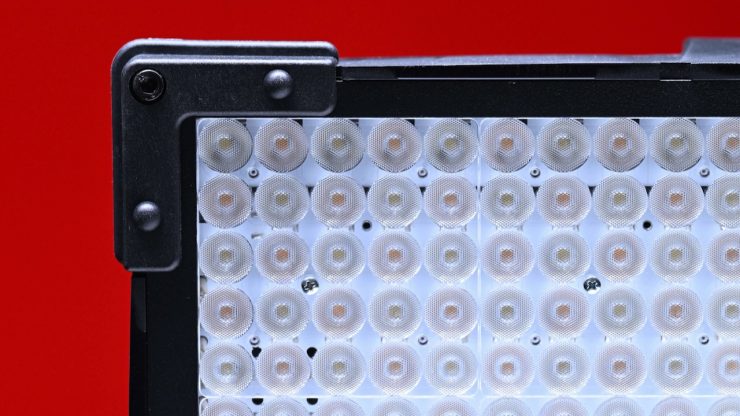
The Lupo SupererpanelPRO Dual Color Hard 60 is one of just a handful of new products to emerge out of the Collegno factory in Italy. The new SupererpanelPRO Dual Color Hard 60 isn’t as bright as the UltrapanelPRO Dual Color Hard 60 or the HyperpanelPRO Dual Color Hard 60, but it is still claimed to output 73,000lx @1m /3.3′ when used at 5600K.
The Lupo panels punch well above their light and they all have a very high output that is unmatched by most other similar fixtures.
The Lupo SupererpanelPRO Dual Color Hard 60 is claimed to feature high CRI and TLCI scores, AC/DC operation with practical and economical 14V and 160 Wh batteries, DMX, RDM, and Bluetooth Long Range control.
Made In Italy
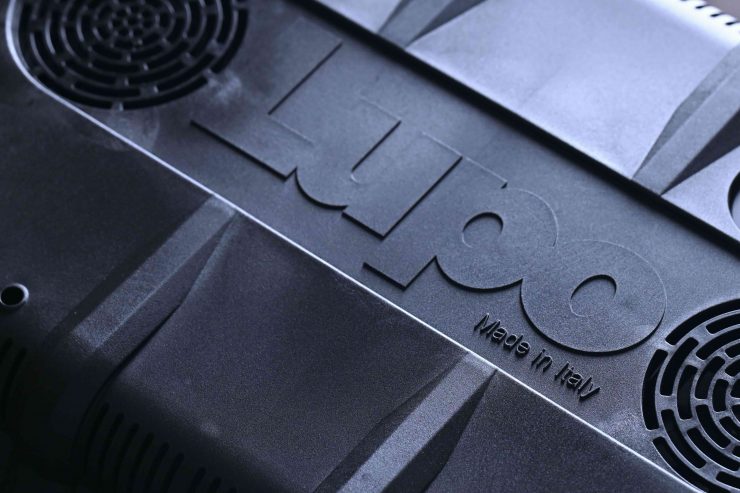
When you think of Italy, LED lights are not the first thing that comes to mind. Most people would probably assume that Lupo is a new company, but they were founded way back in 1932. In their first few decades, they mainly made equipment and accessories for professional photography such as enlargers and tripods.
In the ‘90s, they began to focus on the production of professional lighting equipment not only for photographic purposes but also for broadcasting and video environments.
I have been a big fan of the Lupo Superpanel series. They are high output, color accurate, and well made 1×1 and 2×1panel lights that are hard to beat at their price point.
The Lupo SuperpanelPRO Dual Color Hard 60
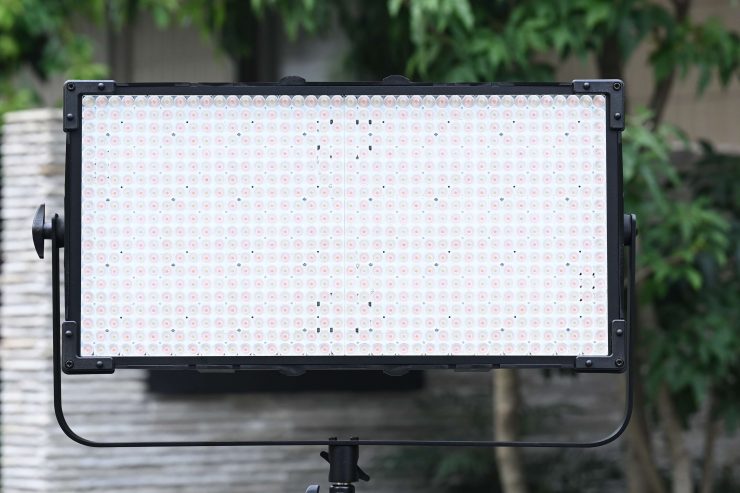
The SuperpanelPRO Dual Color Hard 60 is a hard light with a narrow beam angle and no front diffusion panel, and you will need to use some type of diffusion if you want to turn it into a softer source. It features 800 high CRI power LEDs. Each LED is housed behind what looks to be a mini holographic lens that is used to intensify and direct the light.
What is new?
- New better design
- All internal electronics
- Powercon connectors in/out
- Bluetooth Long Range module inside that works with Lupo Link app for Android
- Price is basically the same as before for the same models
The SuperpanelPRO Dual Color Hard 60 is CCT adjustable from 2800K to 6500K with a claimed CRI and TCLI of 97 and 98 respectively. 2800-6500K is a decent range for a Bi-color fixture, and a lot of potential users of this light are probably going to be using a fixture such as this within that range the majority of the time.
Size & Weight
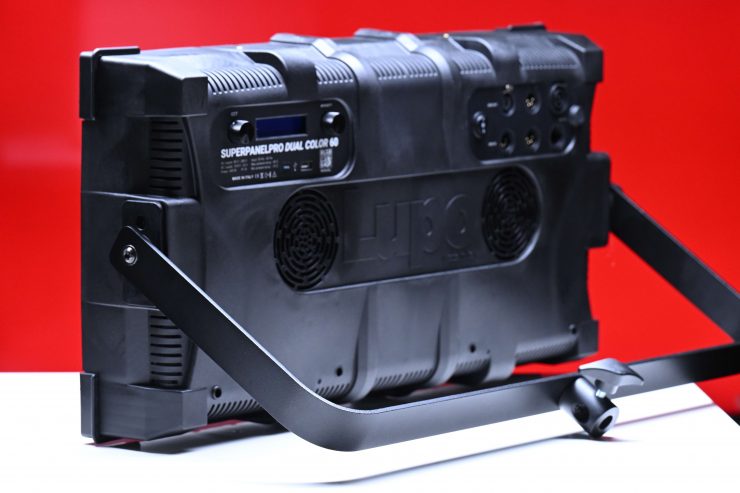
The SuperpanelPRO Dual Color Hard 60 has physical dimensions of 65 cm x 34 cm x 11 cm (25.58″ x 13.38″ x 4.33″) and weighs in at 9 kg / 19.8 lb with its yoke frame. 9kg sounds heavy, but it actually a pretty lightweight fixture given its all-in-one design and size.
How does this weight compare to some other similar style 2×1 lights?
| WEIGHT* | |
| Lupo SuperpanelPRO Dual Color Hard 60 | 9 kg / 19.8 lb |
| Lupo HyperpanelPRO Dual Color Hard 60 | 9 kg / 19.8 lb |
| Litepanels Gemini 2×1 Hard RGB LED Light Panel | 11.5 kg / 25.3 lb |
| ARRI SkyPanel X21 Modular LED Panel | 15 kg / 33.1 lb |
| Rotolight Titan X2 | 14.3 kg / 31.52 lb** |
| Godox KNOWLED P600R | 17.8 kg / 39.2 lb |
| Creamsource Vortex8 | 15.6 kg / 34.39 lb* |
| Nanlux Dyno 650C | 15.8 kg / 34.8 lb |
| Aputure Nova P600c | 13.74 kg / 30.29 lb *** |
| Luxli Taiko | 8.96 kg / 19.75 lb |
| Velvet EVO 2 | 7.57 kg / 16.7 lb** |
| SUNNYXIAO CASTER C02P | 12.5 kg / 27.55 lb |
| Fluotec CineLight Color60 2×1 | 10.06 kg / 22.2 lb** |
*Weight includes power supply and yolk frame.
** With standard yoke
***Excludes power supply
The future’s so bright I gotta wear shades
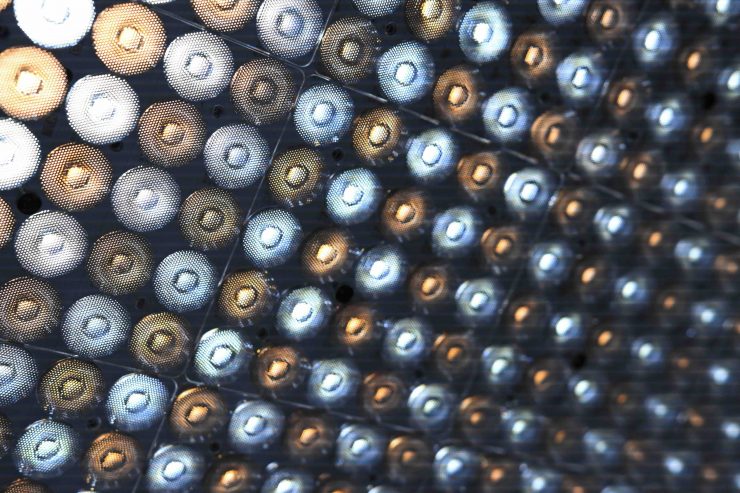
The original Lupo Superpanel Dual Color 1×1, which I reviewed way back in 2016, put out a whopping 21,800 lx at a distance of 1m. At the time nothing came even vaguely close to it when it came to output.
5 years ago I reviewed the Superpanel Dual Color 60, which output 67,000 lx when the fixture was used at 5600K at a distance of 1m. Again, at the time this was way higher than anything else on the market.
The new SuperpanelPro Dual Color 60 Hard should have more output than its predecessor and we see if this is the case further down in the review.
This high output has been achieved by using the latest generation of LEDs and the light beam angle is the same as the HyperpanelPRO Hard and UltrapanelPRO Hard models (40°).
Starting with a high output is usually a good thing because it means you can heavily diffuse it to produce a really nice soft lighting source. Now, output isn’t everything, there are a lot of factors that go into determining whether a light is good or not.
Beam Angle
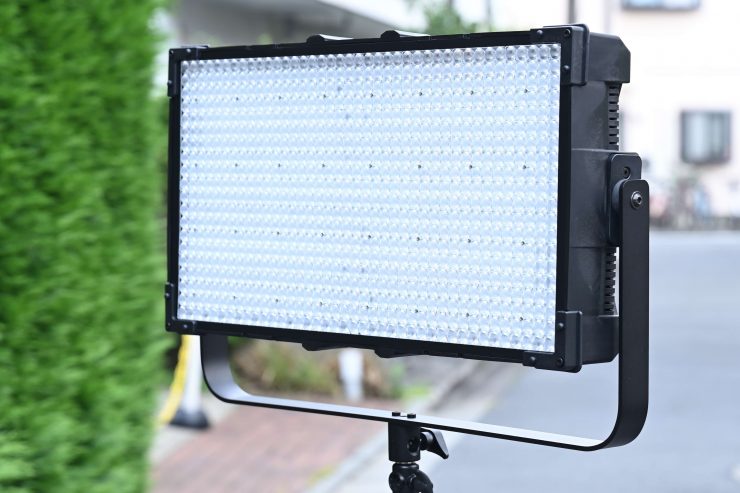
The SuperpanelPRO Hard 60 has a rather narrow 40-degree beam angle which keeps the light source from spilling everywhere. Even though 40 degrees sounds quite narrow it is coming from a 2×1 sized panel, so it doesn’t seem overly spotty. As the output of this light is so high, if you bounce it into a wall or a ceiling, it is certainly capable of creating a much wider spread of light.
Below you can see what the standard beam angle is of some other 2×1 fixtures.
| BEAM ANGLE | |
| Lupo SuperpanelPRO Dual Color Hard 60 | 40° |
| Lupo HyperpanelPRO Dual Color Hard 60 | 40° |
| Litepanels Gemini 2×1 Hard RGB LED Light Panel | 20° |
| ARRI SkyPanel X21 Modular LED Panel | 120° |
| Rotolight Titan X2 | 68°-150° |
| Godox KNOWLED P600R | 45°-55° |
| Creamsource Vortex8 | 20° |
| Nanlux Dyno 650C | 160° |
| Aputure Nova P600c | 120° |
| Luxli Taiko | 76° |
| Velvet EVO 2 | 115° |
| SUNNYXIAO CASTER C02P | 110° |
| Fluotec CineLight Color60 2×1 | 100° |
Now, what you have to remember is that with some of these panel lights you can add modifiers that will tighten the beam angle.
The beam angle of the Lupo SuperpanelPRO Hard is fairly similar to lights such as the Creamsource Vortex8, Godox KNOWLED P600R, and Litepanels Gemini 2×1 Hard.
Power Draw
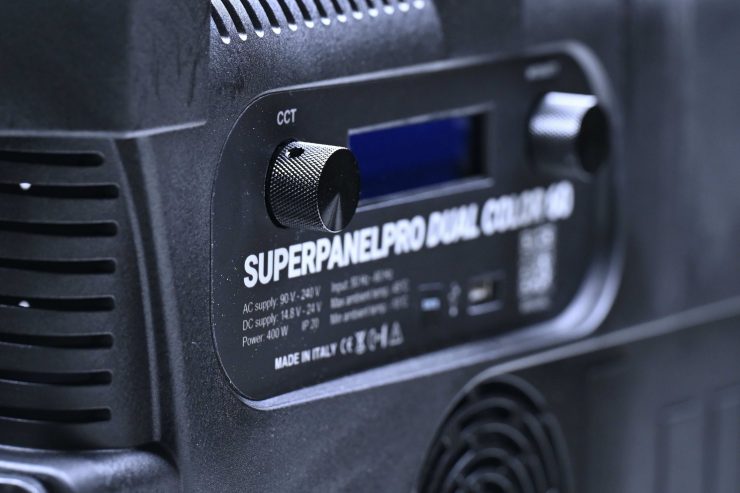
The SuperpanelPRO Dual Color Hard 60 draws 440W, which is a lot more than its predecessor the Superpanel Dual Color 60 which had a power draw of just 220W. I like that Lupo has now done away with having to attach two power supplies that were linked together. Instead, the SuperpanelPRO Dual Color Hard 60 now has an inbuilt power supply. This, at least in my opinion, makes it easier to use and quicker to set up.
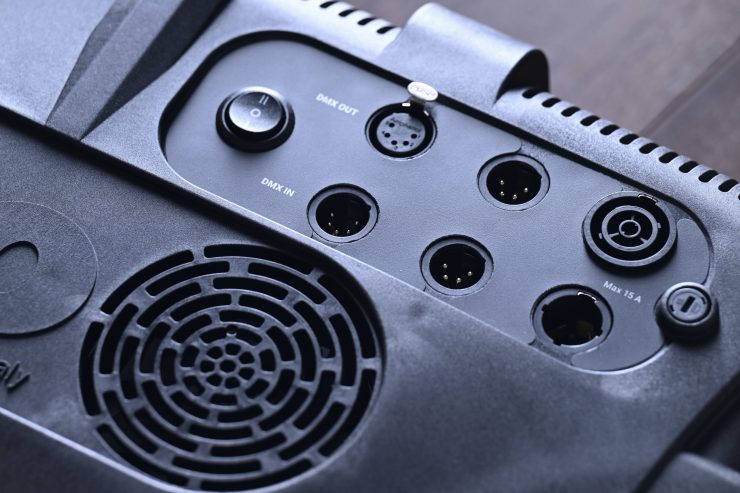
There is a single PowerCon input for power.
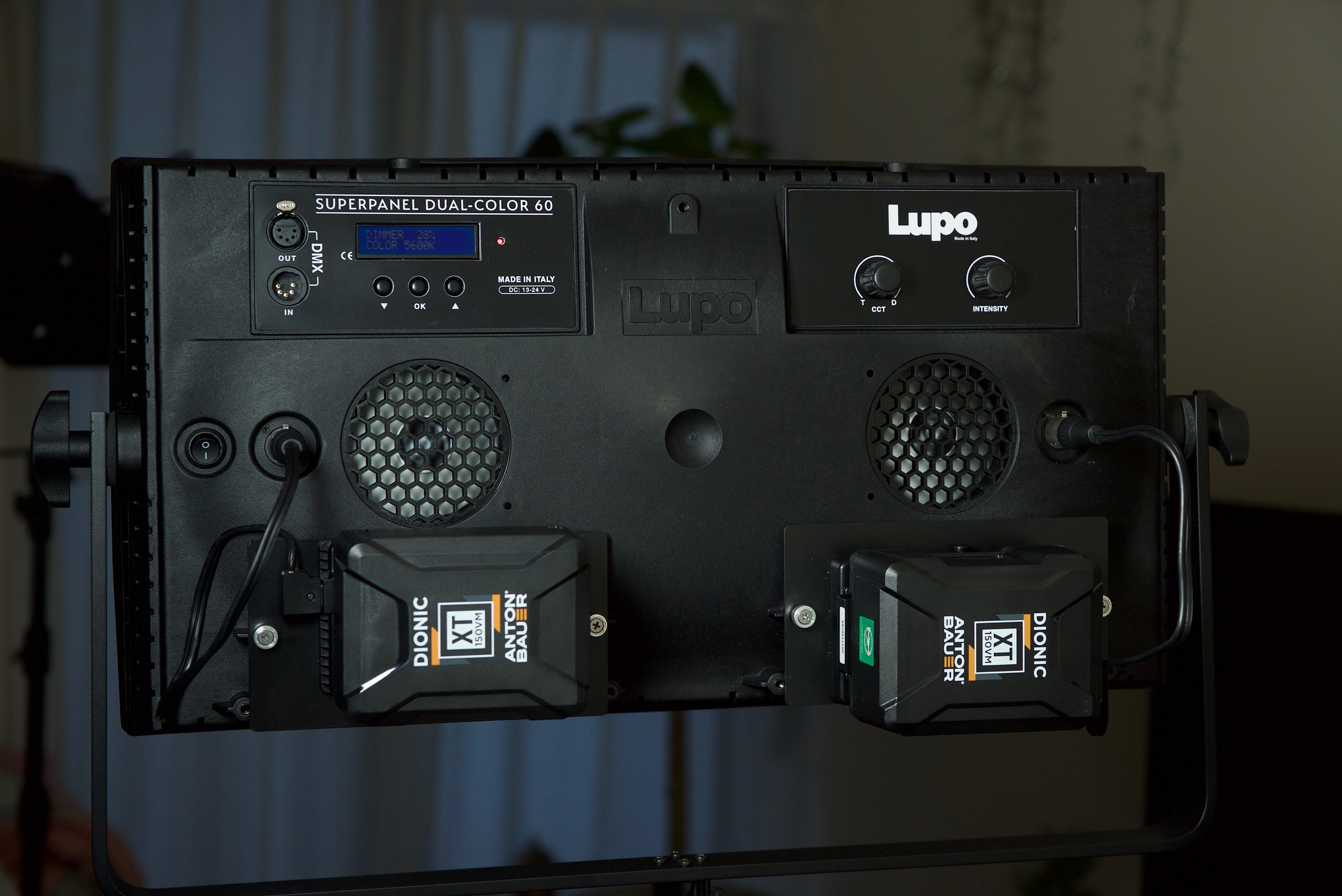
The caveat to having the higher power draw on the SuperpanelPRO Dual Color Hard 60 is that you can no longer run it at full power via a couple of flight-safe camera batteries like you could with the Superpanel Dual Color 60. Lupo also no longer sells V-mount battery plates for the new SuperPanelPro Dual Color Hard 60.
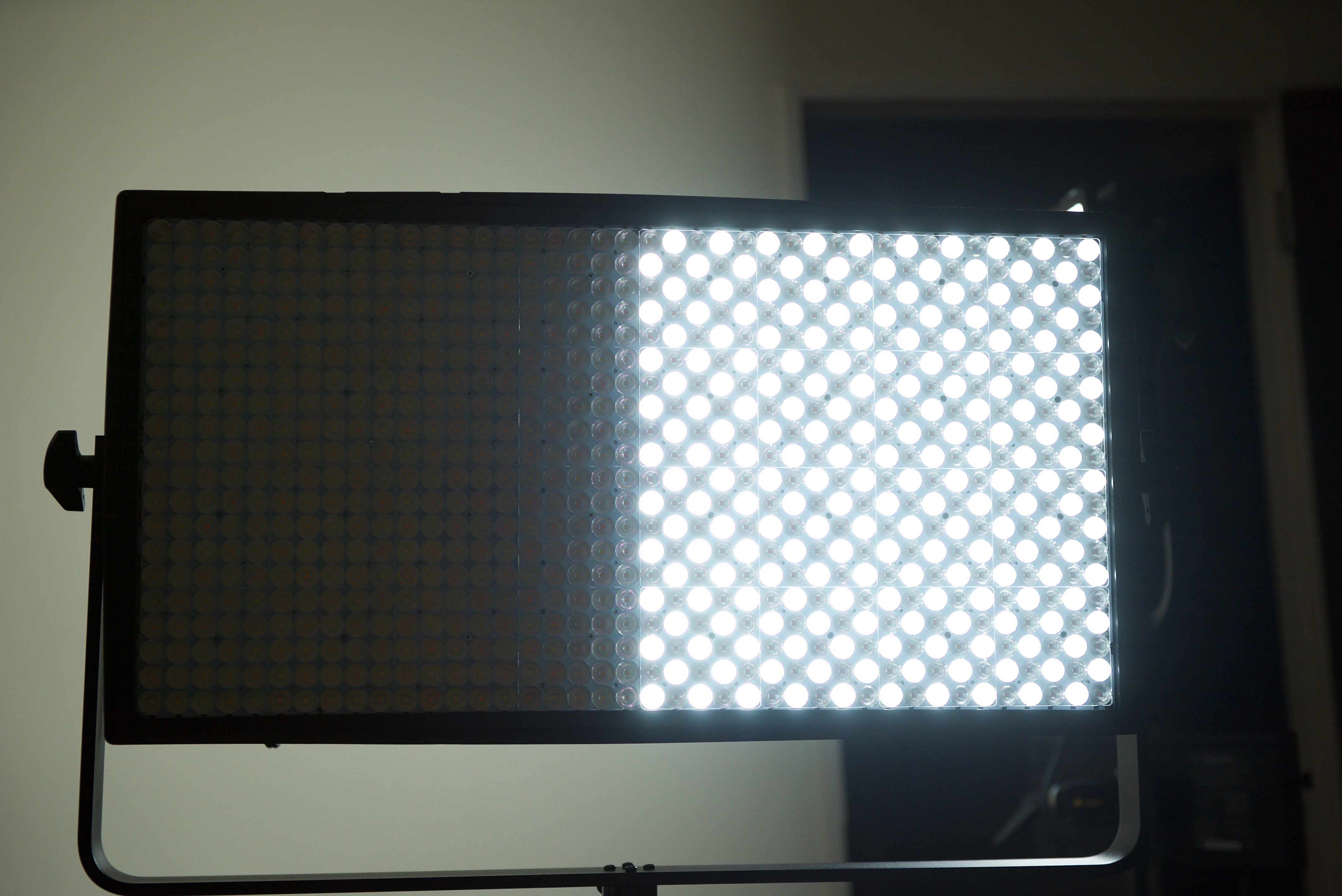
The other benefit the older Superpanel Dual Color 60 had was that you could actually just run half of the panel via a single flight-safe battery.
You can still run the SuperpanelPro Dual Color 60 Hard via two flight-safe 14.8V batteries, but you won’t get 100% output. It doesn’t matter what capacity battery you have, you still need to run two batteries otherwise the light will not power on. It didn’t matter whether I was running high capacity 14.8V batteries or two 150Wh batteries, the light will perform the same way.
The higher power draw does arguably mean that the light is not going to be as suitable as its predecessor for people who travel or want to run it remotely in the field.
In saying that, you can also run the light via a 4-pin 24 V DC input. This allows you to power the light remotely using block batteries and other solutions. You could use something like a Fxlion 24V Skypower Quad-Channel V-Mount Battery Output Adapter or Rotolight 2-Way V-Lock 24V Battery Adapter to power the light remotely.
Here is what some other 2×1-sized fixtures draw when it comes to power.
| POWER DRAW | |
| Lupo HyperpanelPRO Dual Color Hard 60 | 440W |
| Lupo HyperpanelPRO Dual Color Hard 60 | 560W |
| Litepanels Gemini 2×1 Hard RGB LED Light Panel | 500W |
| ARRI SkyPanel X21 Modular LED Panel | 800W |
| Rotolight Titan X2 | 420W |
| Godox KNOWLED P600R | 700W |
| Creamsource Vortex8 | 660W |
| Nanlux Dyno 650C | 650W |
| Aputure Nova P600c | 720W |
| Luxli Taiko | 250W |
| Velvet EVO 2 | 200W |
| SUNNYXIAO CASTER C02P | 450W |
| Fluotec CineLight Color60 2×1 | 125W |
As you can see, the power draw of 2×1 fixtures varies dramatically. The power draw of the HyperpanelPRO Dual Color Hard 60 is on par with most of its direct competition.
But it’s not RGBW
Just because we want something, doesn’t necessarily mean that we need it. Whether you actually need an RGBW light really depends on the type of things that you shoot. If you are primarily shooting interviews, then having an RGBW light may not make a lot of sense. In a lot of scenarios, a dual-color LED light is going to serve your needs, especially if you are a news, documentary, or events shooter.
I am actually ok with it being an old-school bi-color fixture, but it really depends on the type of work you do and what you need a light to do.
If you want increased CCT and the ability to generate colors, you can buy the SuperpanelPRO Full Color Hard 60.
Display & Controls
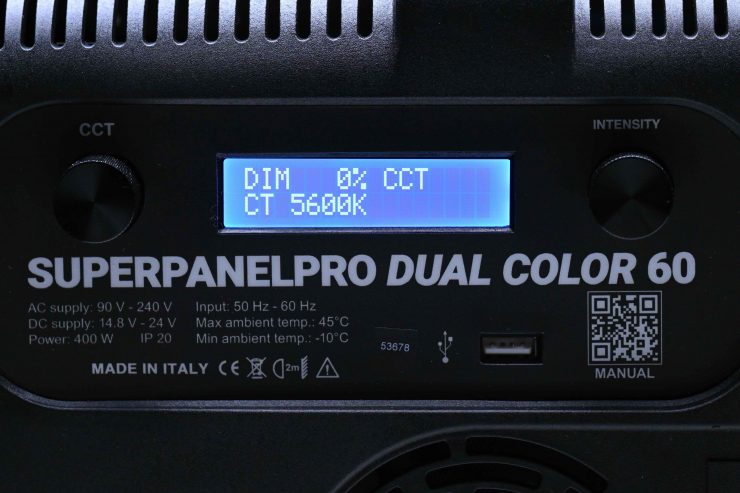
The SuperpanelPRO Dual Color Hard 60 has a simple digital display on the back of the light that lets you see and change the settings for intensity and color temperature.
Just like other Lupo Superpanels, the onboard controls for the SuperpanelPRO Dual Color Hard 60 are very simplistic, as is the menu system.
I do wish that Lupo would update their UI as it’s getting very long in the teeth.
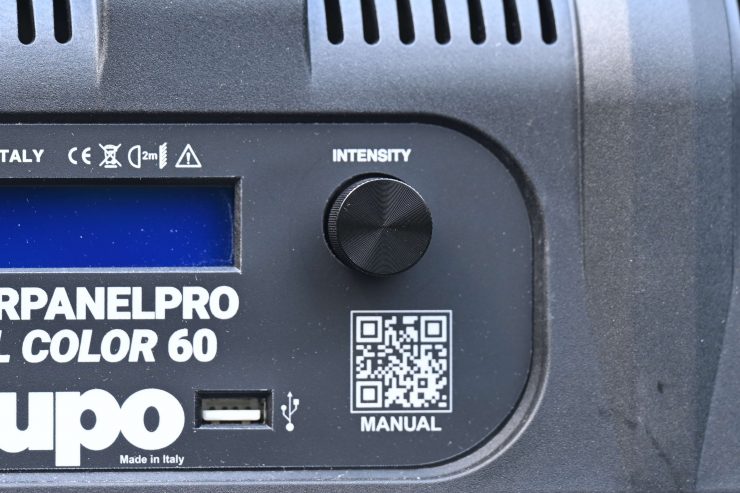
Controlling the intensity and CCT is simple to do and it is a light you can certainly use straight out of the box without referring to an instruction manual.
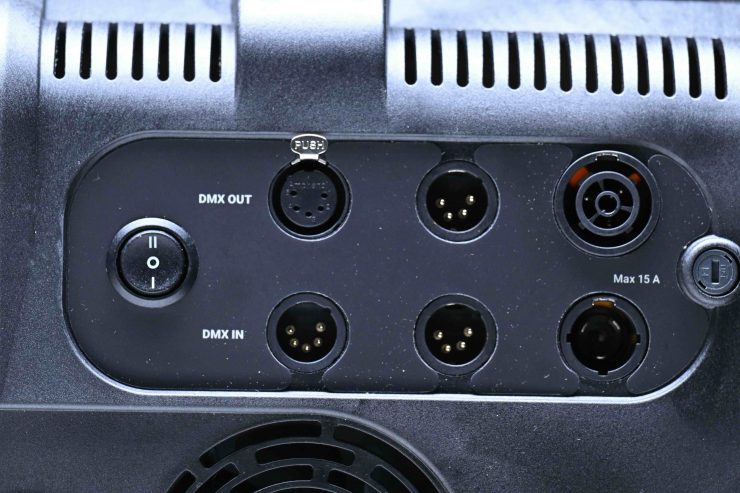
The SuperpanelPRO Dual Color Hard 60 also has a recessed on/off switch, and DMX In and Out,
The light is fully dimmable from 1-100% in one percent increments, and you can also adjust the CCT range in one-kelvin increments for precise color temperature.
What I liked about the LED display is that you can set it to turn off after a select amount of time so you don’t emit any unnecessary light, this is handy if you are working in dark environments. By touching any of the dials or buttons the display’s brightness comes back on.
Linearization
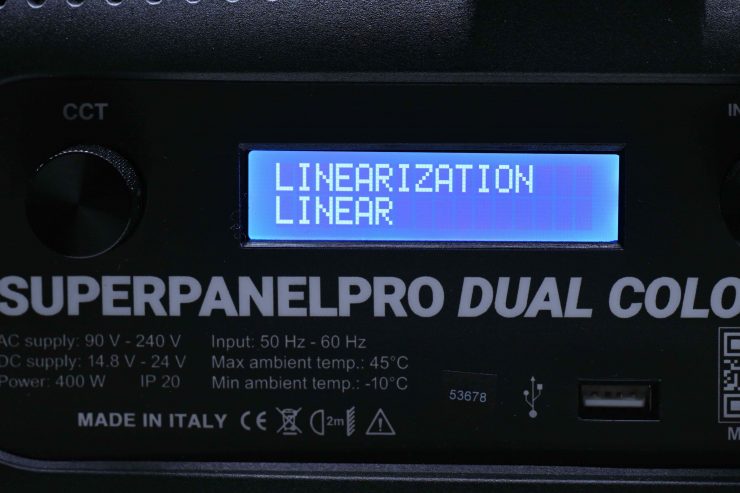
The Dual Colour 60 Hard has what is referred to as a Linearization Mode. Lupo explains that Linearization is the compensation curve for the human eyes’ perception of the luminous intensity emitted as a function of the required power (required power = dimmer value on the display).
The three Linearization Modes the light can operate in are:
- Linear: No compensation. The intensity of the light is directly proportional to the requested power.
- Exponential: The light intensity increases from 0-100 exponentially.
- Logarithmic: The light intensity increases from 0-100 logarithmically.
What all this basically means is that the light’s output will vary depending on what mode you are using. For maximum output, you need to be in the Linear mode. I found that in the Exponential Mode, the maximum output of the light is about 136% less than when the fixture is used in the Linear Mode. In the Logarithmic Mode, it produces about 233% less output.
Build Quality
The SuperpanelPRO Dual Color Hard 60, like previous Lupo fixtures, features a simplistic design. The fixture is all business and it doesn’t jump out and demand attention. Instead, Lupo has just concentrated on making it robust and easy to use.
The yoke frame is reasonably well constructed and the single lock on the yoke tightens down, but I did find that I could still get it to loosen when running a large and heavy lighting modifier.
The casing of the fixture is made out of reinforced technopolymer and the light is nice and robust. It is matte black in color which is good because it doesn’t reflect any light. The only problem I found with the finish on the casing of the light is it is very prone to scratches. While this is more of a cosmetic issue, than a build quality issue, some potential buyers may not like this.
From using other Superpanel lights over the last 8 years I have yet to encounter a single problem when it comes to reliability or build quality. A lot of manufacturers (and I’m not sure if this applies to Lupo or not) are really pushing their LED lights to the limits and the lifespan of those fixtures can certainly be compromised. Given the SuperpanelPRO Dual Color Hard 60 high output, it will be interesting to see how it stands up over a long period of time.
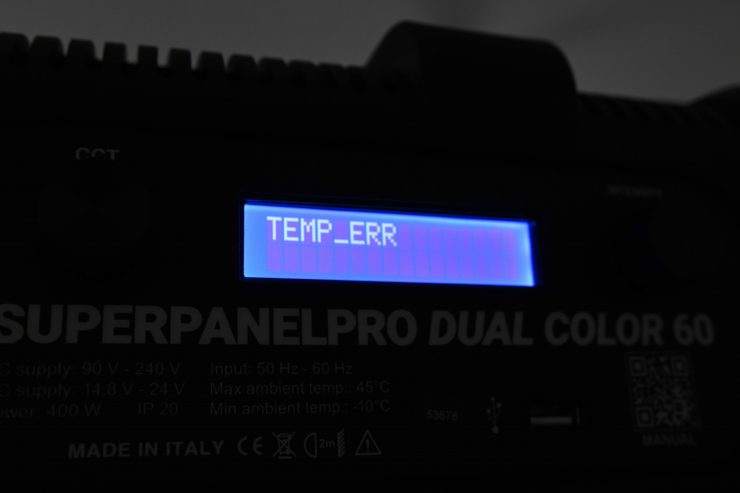
I did have an issue where the Temp Warning light came on and the fixture turned off. I was using it outdoors on a 33C day, however, I didn’t have it on for an extended period of time.
I have had several LED panel lights (not Lupo’s) that ran really hot and ended up dying after only a year or so of use. If the LED light you are using is really hot to touch then there is a good chance it isn’t being cooled correctly and it could end up dying long before it should.
Fans
The SuperpanelPRO Dual Color Hard 60 has two built-in fans to keep it cool. With the high output of this light, cooling must have been a primary concern for the design team.
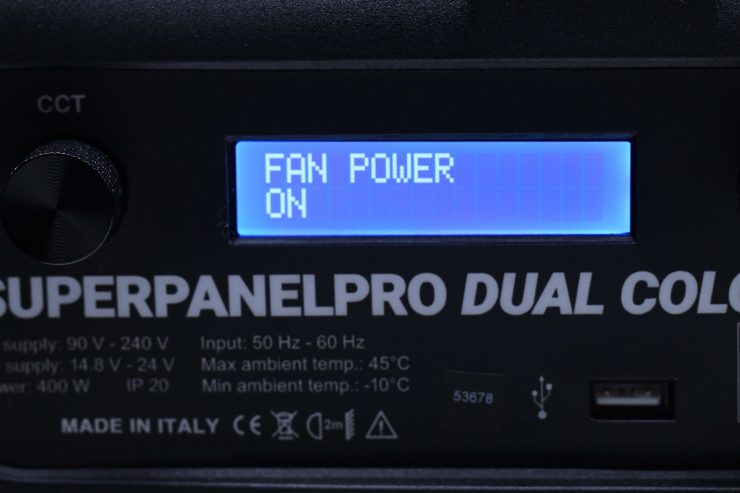
The fans on the SuperpanelPRO Dual Color Hard 60 are barely audible.
Just like other Superpanel fixtures, you can turn the fan off, but if you do the maximum intensity level is limited to 50%.
Photometrics
So now let’s get to the photometric results. I always test lights in this way so that I get a reference to how they compare to other fixtures. Results only tell part of the story and should never be used alone to judge a light. I have found from extensive testing over the years that certain lights that have good photometric results don’t always look good, and lights that have worse photometric scores can sometimes look better than their results indicate.
You should never judge a light based on one particular set of tests. You need to look at all of the data to get a comprehensive idea of how a light performs.
Different lights can also look different depending on what camera you happen to be using. You should never judge a light based on one particular test. You need to look at all of the data to come up with an accurate conclusion.
Output & Color Temperature Accuracy
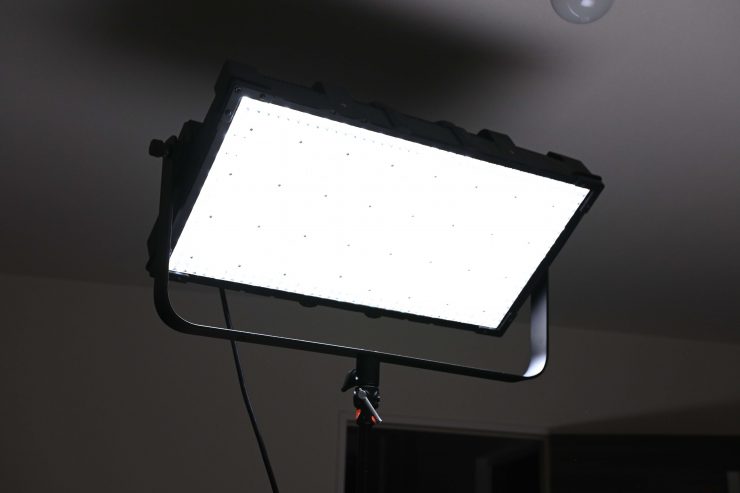
I tested the SuperpanelPRO Dual Color Hard 60 at a variety of CCT settings with a Sekonic C-800 Spectrometer to find out how much output the light had and how accurate the Kelvin color temperature reproduction was. All readings (unless otherwise stated) are taken at a distance of 1m / 3.28ft in a controlled environment.
There is an issue with trying to measure this light at a distance of 1m/ 3.3″ which I will explain in the next section.
5600K
Lupo SuperpanelPRO Dual Color Hard 60 5600K
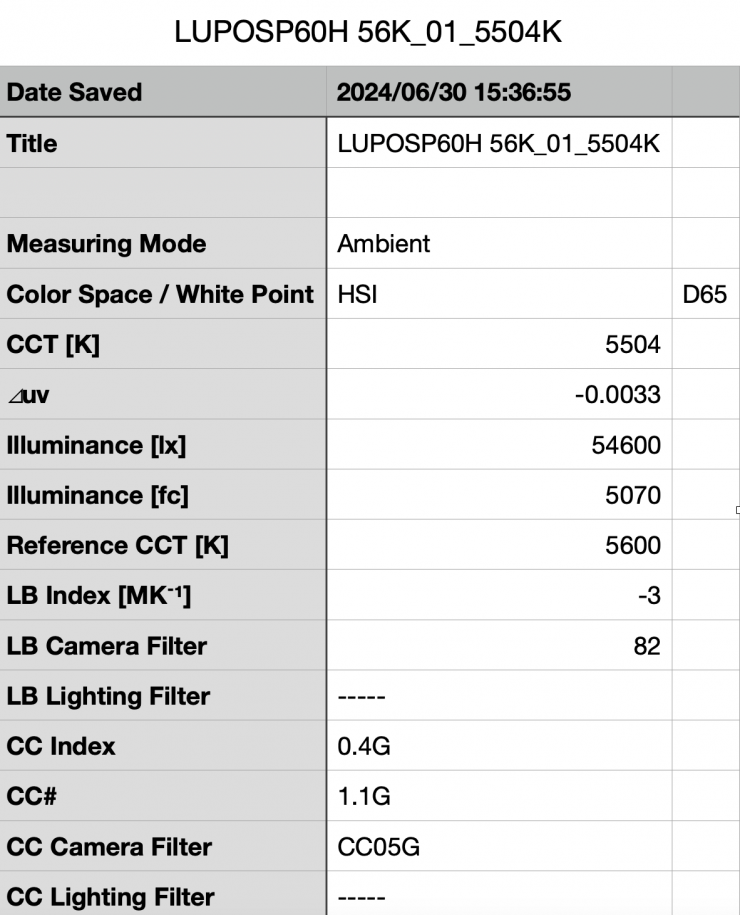
Above you can see that the HyperpanelPRO Dual Color Hard 60 recorded an output of 54,600 lx (5070 fc) when set at 5600K and run off mains power. This wasn’t nearly as high as the claimed output of 73,000 lx. Now, there is a caveat with testing this light at a distance of 1m / 3.3′, so please don’t jump to any conclusions just yet as I also tested the light in a different way where it recorded a result that was actually a lot higher than the claimed output of 73,000 lx. You can see that test a little further down.
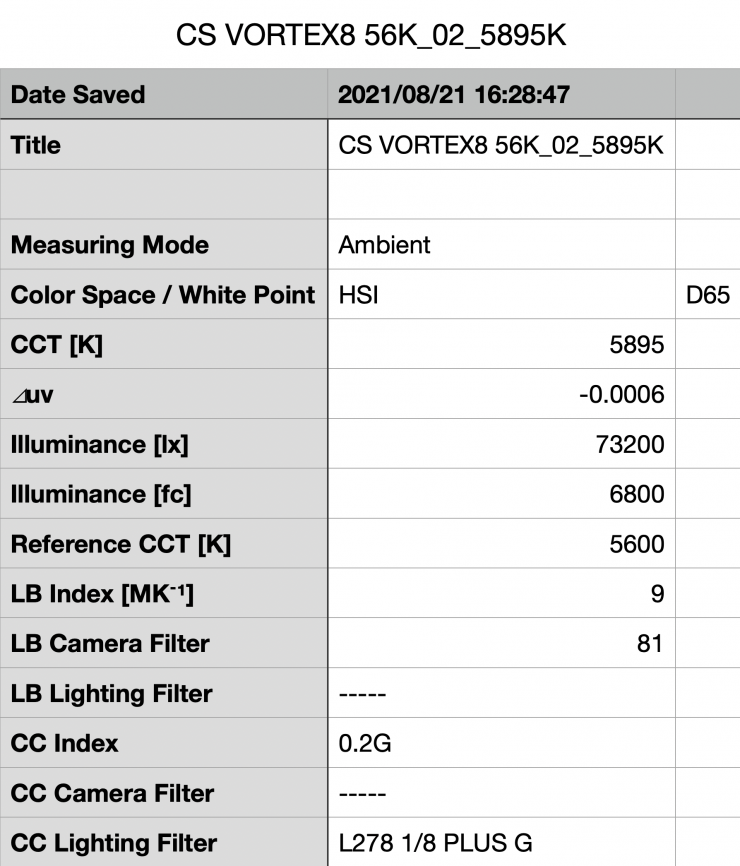
As a comparison, above you can see that the Creamsource Vortex8 recorded an output of 73,200 lx (6800 fc) when set at 5600K and run off mains power.

What you clearly need to remember is that you can’t point this light without diffusion being used directly at a subject.
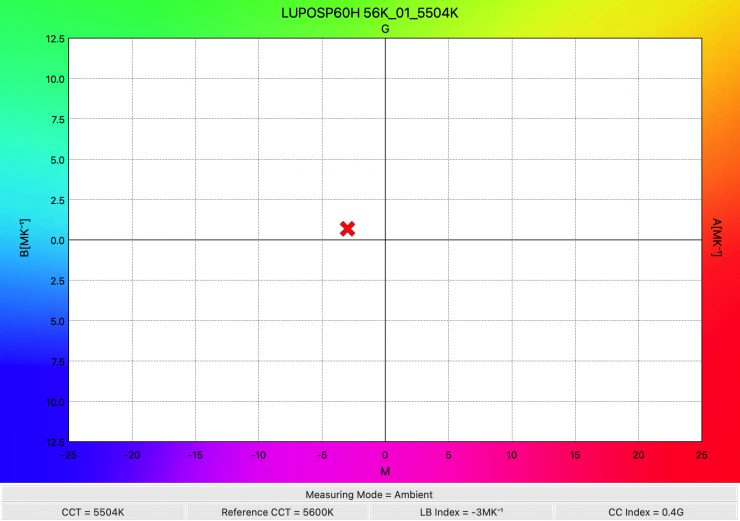
The light recorded a CCT reading of 5504K which was 96K off being correct.
Now, the figure of 54,600 lx (5070 fc) was lower than the claimed output of 73,000 lx so I wondered why this was. When I reached out to Lupo they told me that you will get an incorrect figure if you do a direct reading at 1m /3.3′. If you consider the diameter of the sensor (for example Sekonik 800C) it is obviously very small. The emitting area of a 2×1 is very large by comparison. Of course the quantity of light emitted from the whole area of the panel will not fit at 1m in the small area of the sensor. Ideally the sensor should be the same area as the emitting area. In this case, the ideal sensor would be a 2×1 sensor and would “catch” all the light emitted.
They told me that if I measured the light at 5m or 10m I should find values that were much more similar or identical to those of Lupo’s datasheets. With that in mind, I decided to test the light again at 5m / 16.4′.
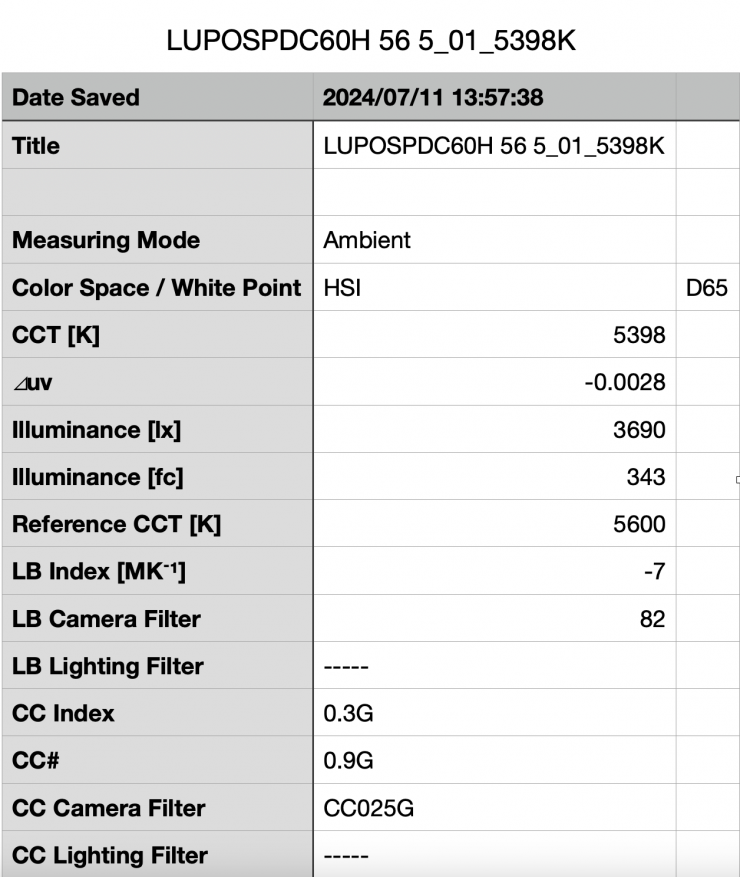
Above you can see that when the light was set at 5600K and measured at a distance of 5m / 16.4′ it recorded a reading of 3690 lx / 343 fc. Now, if we use the inverse square law we can calculate the output at 1m /3.3′ as being 92,250 lx. This figure actually exceeds the claimed figure of 73,000 lx.
3690 lx at 5m / 16.4′ is a ton of output from a 2×1 fixture, but you clearly need to remember that this is coming from a 40-degree beam angle. In saying that, on a light of this size, a 40-degree beam angle is not actually as tight as you may think.
Unfortunately, years ago manufacturers started the “battle” of the output at 1m. This is obviously ridiculous and of little use when measuring big light sources, but Lupo told me that they were also guilty of this because everybody does it.
How does this compare to some other 2×1 RGBW lights that we have previously reviewed?
| Output at 5600K | |
| Lupo SuperpanelPRO Dual Color Hard 60 | 96,250 lx* |
| Lupo HyperpanelPRO Dual Color Hard 60 | 231,500 lx* |
| Creamsource Vortex8 | 73,200 lx |
| Rotolight Titan X2 | 13,300 lx |
| ARRI S60-C SkyPanel | 10,900 lx |
| Litepanels Gemini 2×1 HARD | 207,000 lx** |
| Luxli Taiko | 13,700 lx |
| SUNNYXIAO CASTER C02P | 14,300 lx |
| Rayzr MC MAX 400 | 10,400 lx |
*Inverse-square law calculation (light tested at 5m /16.4′)
**Not independently tested (20-degree beam angle)
As far as an accurate rendition of creating a 5600K source here is how some of the other 2×1 RGBW lights that we have previously reviewed fare:
| Kelvin Color Temperature (when set at 5600K) | |
| Lupo SuperpanelPRO Dual Color Hard 60 | 5504K 0.4G |
| Lupo HyperpanelPRO Dual Color Hard 60 | 5732K 0.3G |
| Creamsource Vortex8 | 5983K 0.0 |
| Rotolight Titan X2 | 5689K 0.1M |
| ARRI S60-C SkyPanel | 5708K 0.0 |
| Litepanels Gemini 2×1 HARD | NA |
| Luxli Taiko | 5510K 0.0 |
| SUNNYXIAO CASTER C02P | 5634K 0.0 |
| Rayzr MC MAX 400 | 5621K 0.4M |
The Lupo was not as Kelvin color temperature accurate as some of the 2×1 RGBW lights I have reviewed, but the result was still pretty good. Please remember that one set of results doesn’t tell you the whole story about any light.
Lupo SuperpanelPRO Dual Color Hard 60 5600K (14.8V Batteries)
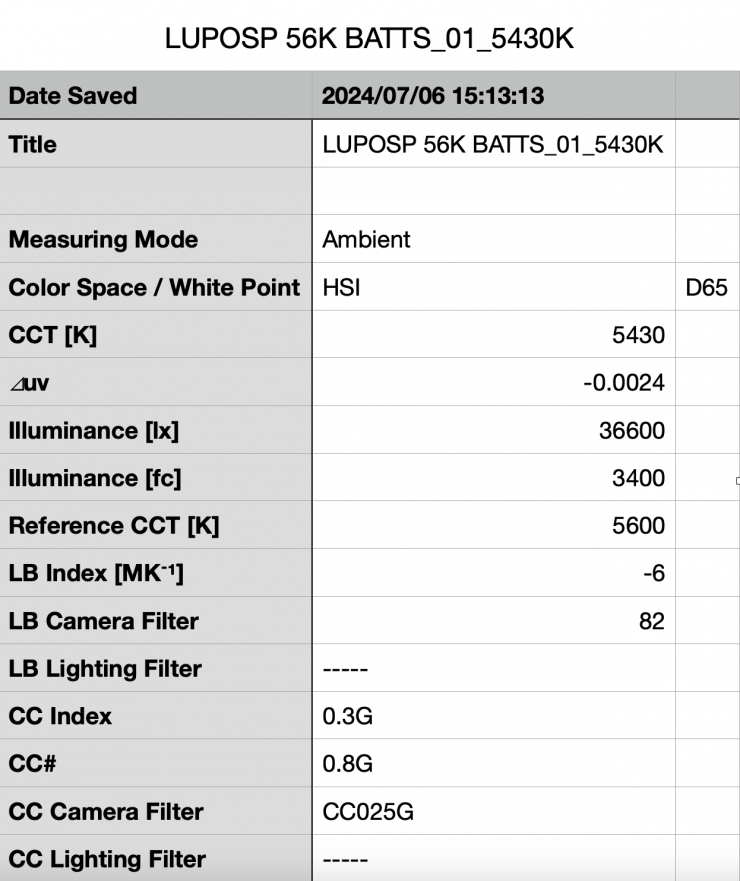
Above you can see the SuperpanelPRO Dual Color Hard 60 recorded an output of 36,600 lx (3400 fc) when set at 5600K and used with a 420W and 590Wh 14.8V batteries. This tells me that the light has 32.96% less output when you run it via batteries.
Now, what if we try running the light via two 150Wh 14.8V batteries? Will it still work?
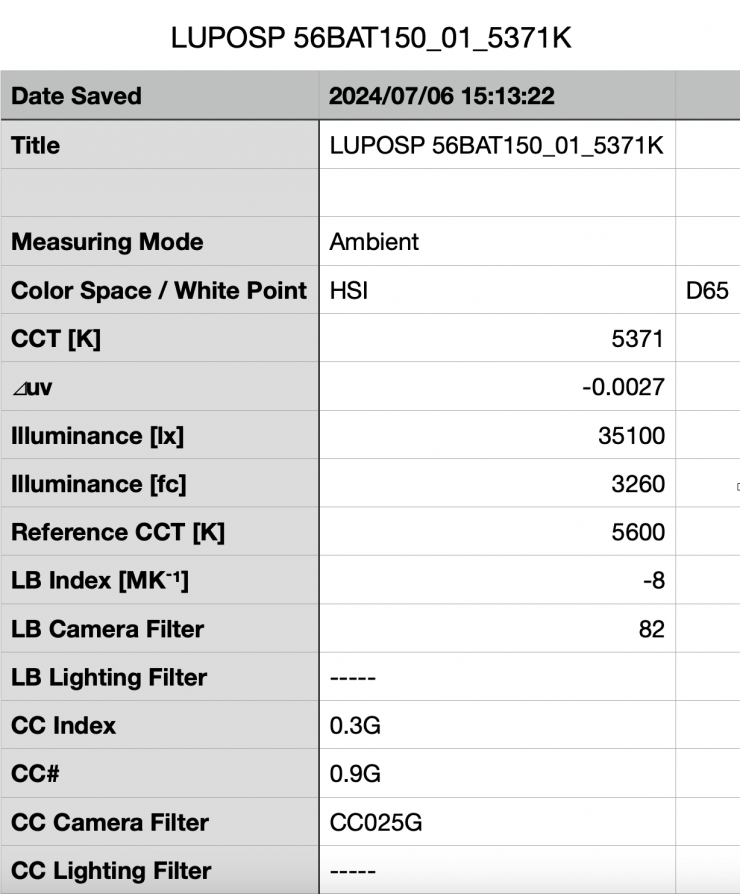
Above you can see the SuperpanelPRO Dual Color Hard 60 recorded an output of 36,600 lx (3400 fc) when set at 5600K and used with two 150Wh 14.8V batteries. This was the exact same output as running the light via two higher capacity batteries. This clearly tells me that higher capacity batteries will not give you more output, just long run times.
Lupo SuperpanelPRO Dual Color Hard 60 5600K (DoPchoice SNAPBAG)
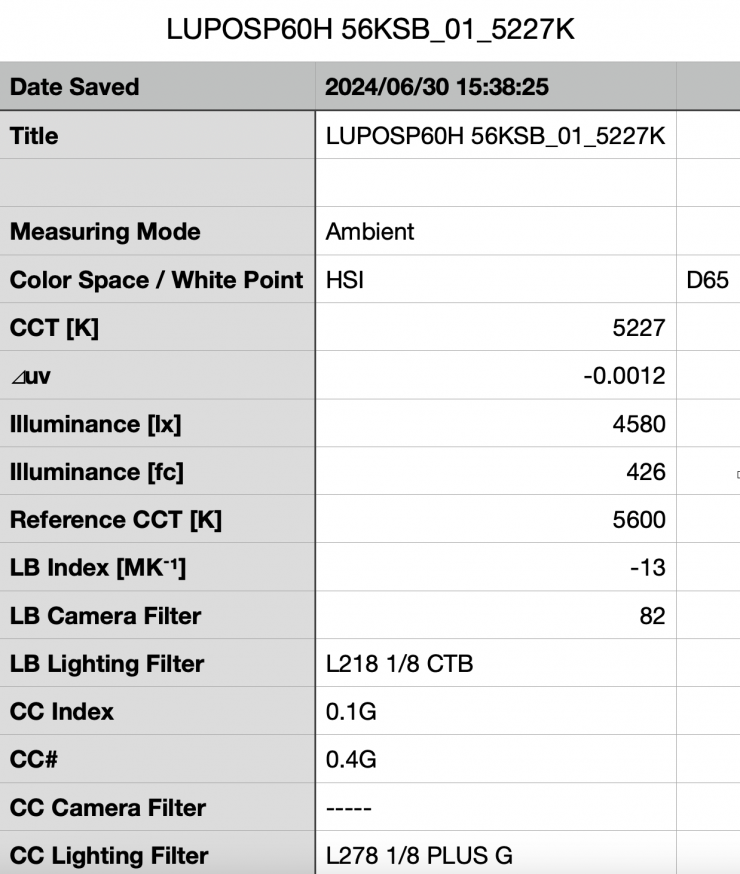
Above you can see the SuperpanelPRO Dual Color Hard 60 recorded an output of 4580 lx (426 fc) when set at 5600K and used with a DoPchoice SNAPBAG soft box. This is still a lot of output from a 2×1 light using a soft box of this size.
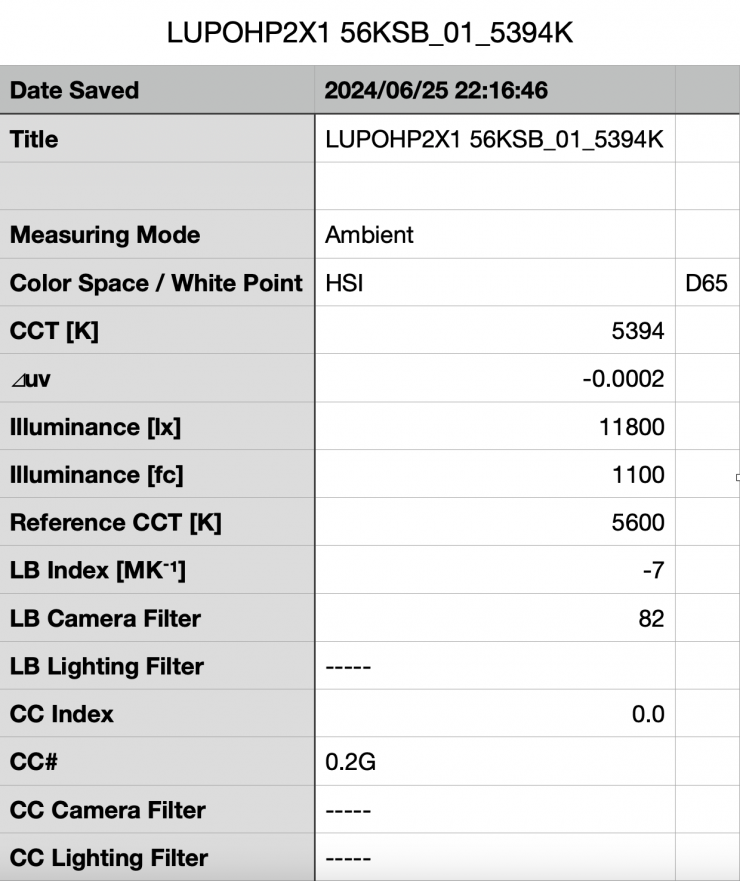
As a comparison, above you can see the HyperpanelPRO Dual Color Hard 60 recorded an output of 11,800 lx (1100 fc) when set at 5600K and used with a DoPchoice SNAPBAG soft box. This is still a ton of output from a light using a soft box of this size.
The DoPchoice SNAPBAG certainly softens the light up and you can get really nice results.
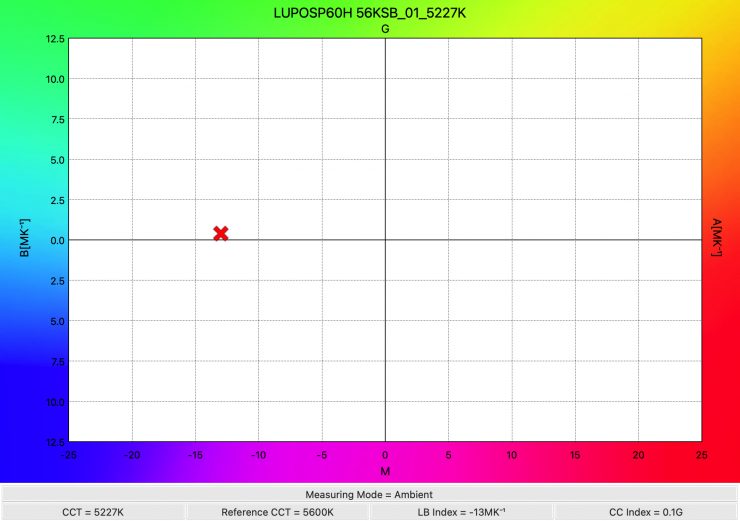
The light recorded a CCT reading of 5227K. This is also showing me that the included diffusion panel is altering the Kelvin color temperature.
Ok, so what do I need to do to get the CCT to better match a 5600K source? Well, because I have a Sekonic C-800-U I can simply make a CCT adjustment on the light and then measure what that result is.
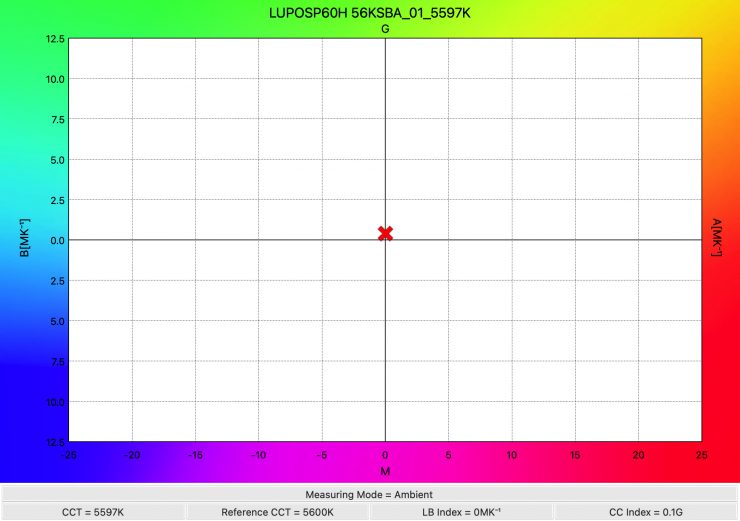
Above you can see that once I set the SuperpanelPro Color Hard 60 to 6000K I got an almost perfect reading of 5597K.
Lupo SuperpanelPRO Dual Color Hard 60 5600K (Fan Off)
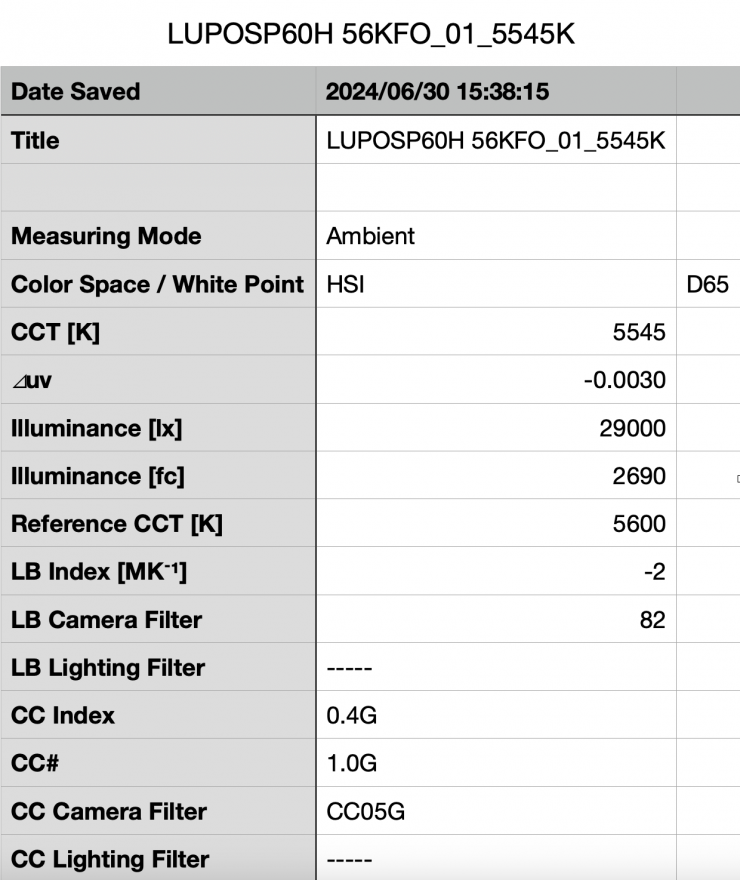
Above you can see that even with the fan turned off, which limits the output to 50%, the light was still able to output 20,000 lx / 2690 fc.
3200K
Lupo SuperpanelPRO Dual Color Hard 60 3200K
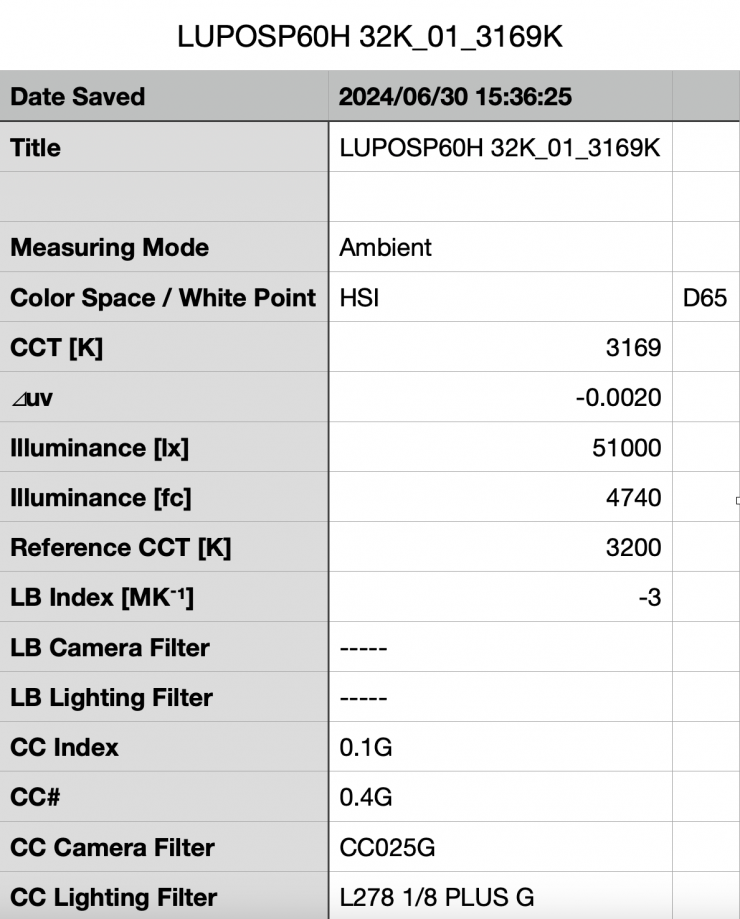
Above you can see the light’s output when it was set at 3200K. It produced 51,000 lx (4740 fc), which was just 6.59% less than the 54,600 lx it produced at 5600K.
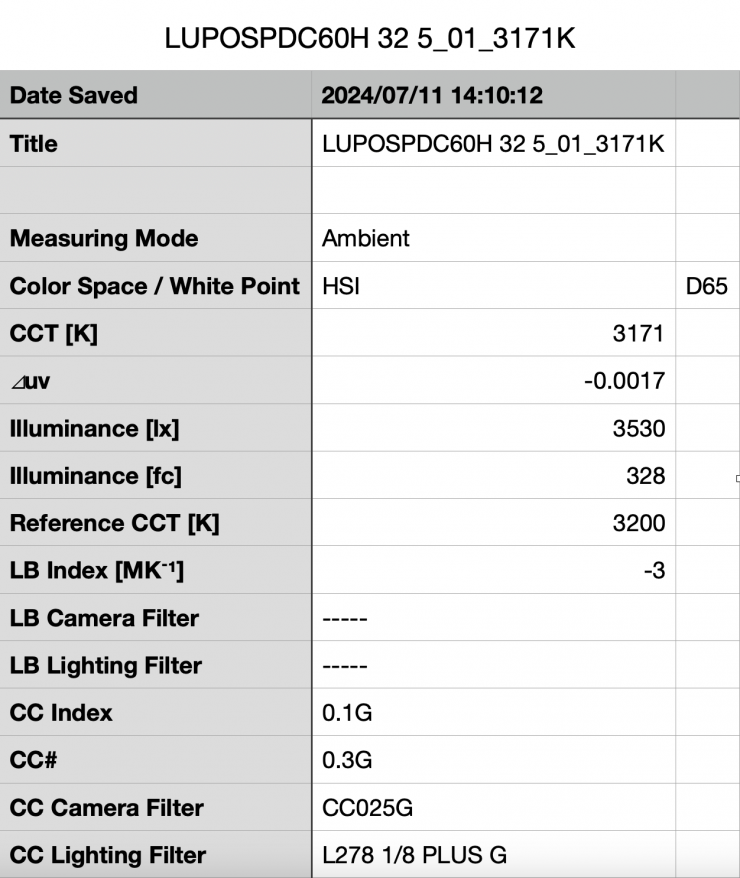
Again, if I test the light at a distance of 5m /16.4′ it recorded an output of 3530 lx / 328 fc. If I use the inverse square law you can see that the light has an output of 88,250 lx @1m /3.3′.
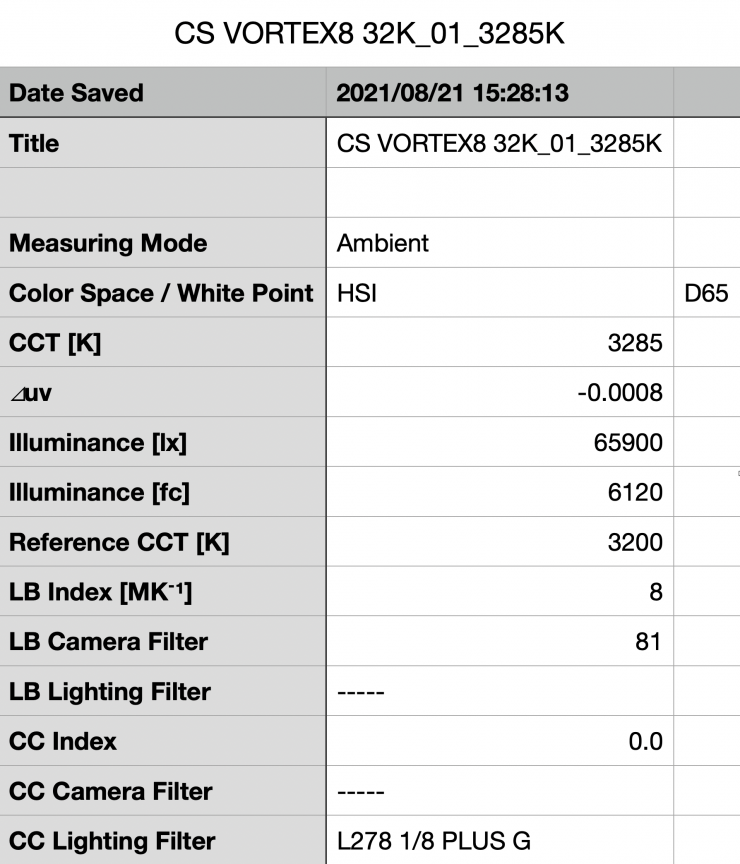
As a comparison, above you can see how much output the Ceamsource Vortex 8 had when it was set at 3200K. It produced 65,900 lx (6120 fc), which is 9.97% less than the 73200 lx it produced at 5600K.
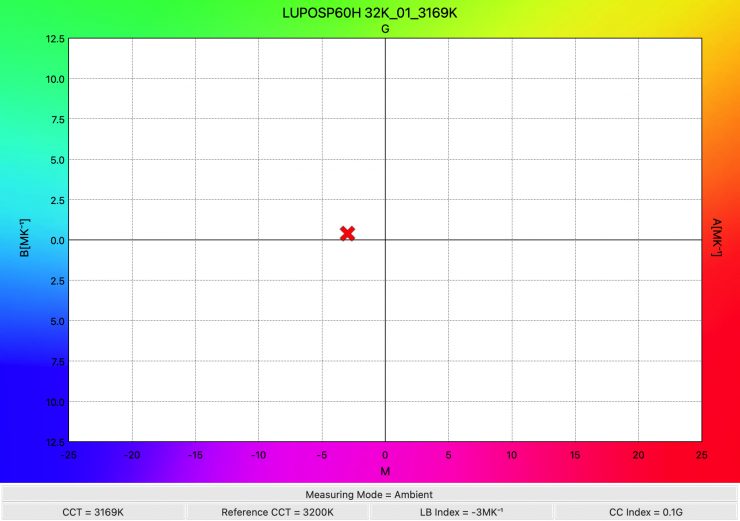
As far as Kelvin color temperature accuracy goes, it recorded a pretty accurate reading of 3288K.
Again, let’s compare it to some other 2×1 RGBW lights that we have previously reviewed:
| Output at 3200K | |
| Lupo SuperpanelPRO Dual Color Hard 60 | 88,250 lx* |
| Lupo HyperpanelPRO Dual Color Hard 60 | 234,000 lx* |
| Creamsource Vortex8 | 65,900 lx |
| Rotolight Titan X2 | 13,500 lx (no diffusion) |
| ARRI S60-C SkyPanel | 10,400 lx |
| Litepanels Gemini 2×1 HARD | 180,000 lx** |
| Luxli Taiko | 13,600 lx |
| SUNNYXIAO CASTER C02P | 15,300 lx |
| Rayzr MC MAX 400 | 8540 lx |
*Inverse-square law calculation (light tested at 5m /16.4′.
**Not independently tested (20-degree beam angle)
As far as an accurate rendition of creating a 3200K source here is how some of the other 2×1 RGBW lights that we have previously reviewed fare:
| Kelvin Color Temperature (when set at 3200K) | |
| Lupo SuperpanelPRO Dual Color Hard 60 | 3288K 0.1G |
| Lupo HyperpanelPRO Dual Color Hard 60 | 3135K 0.3G |
| Creamsource Vortex8 | 3242K 0.0 |
| Rotolight Titan X2 | 3246K 0.0 |
| ARRI S60-C SkyPanel | 3225K 0.1M |
| Litepanels Gemini 2×1 HARD | NA |
| Luxli Taiko | 3354K 0.2G |
| SUNNYXIAO CASTER C02P | 3331K 0.2M |
| Rayzr MC MAX 400 | 3300K 0.5M |
When the CCT is set at 3200K all of these lights are pretty accurate.
How does it perform at various Kelvin color temperatures?
Summary of results
| OUTPUT | CCT READING | |
| 2800K | 50,300 lx | 2866K |
| 3200K | 51,000 lx | 3169K |
| 4500K | 53,600 lx | 4495K |
| 5600K | 54,600 lx | 5504K |
| 6500K | 54,900 lx | 6307K |
These results show me that the lights output is very consistent across its CCT range. The light’s output varies by just 8.37% across the 2800K to 6500K range. This was very impressive.
The results also show me that the light is pretty CCT accurate from 2800-5600K. At 3200K and 2800K, it was very good. Only at 6500K was it a bit off.
CCT consistency when dimming the light
Now, what you should always do when testing lights is to see if the CCT remains consistent when dimming the light. Just because you set a light at say 5600K, that doesn’t mean that the CCT will remain stable as you start dimming the fixture down.
I decided to do a series of tests at 100%/75%/50%/25%/10% to see if the CCT being recorded changed. This was done at a distance of 1m using a Sekonic C-800.
| INTENSITY | CCT READING |
| 100% | 5504K |
| 75% | 5503K |
| 50% | 5520K |
| 25% | 5496K |
| 10% | 5428K |
The Lupo is able to maintain excellent CCT consistency as you start dimming the fixture. My testing showed that the CCT only varied by 29K from 100-25%. These are good results and it shows me that you can dim this fixture down without having to worry about any big noticeable changes in the CCT.
How linear is the output?
With lights, it is important to check how linear the dimming curve is. So let’s check out how the Lupo HyperpanelPRO Dual Color Hard 60 performs when it is used in its Linear Dimming Curve mode.
| INTENSITY | OUTPUT |
| 100% | 54,600 lx |
| 75% | 40,700 lx |
| 50% | 27,200 lx |
| 25% | 13,800 lx |
| 10% | 5,710 lx |
At 50%, the fixture produces 50.18% less output than when it was used at 100%. At 25% it has 74.72% less output than when it was used at 100%. At 10% it had 89.54% less output. This tells me that the light’s dimming curve is extremely linear.
Color Rendering
So now that we have seen how much output the Lupo SuperpanelPRO Dual Color Hard 60 produces, how does it perform when it comes to replicating accurate colors? Will the high output compromise the color accuracy? Well, let’s find out.
5600K
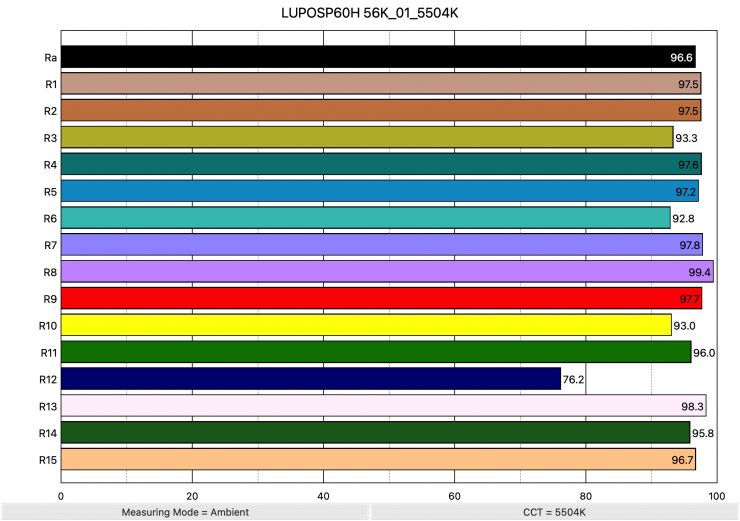
Above you can see that when the light was set at 5600K it recorded an average CRI (R1-R8) of 96.6 and an extended CRI (R1-R15) of 95.12 For replicating accurate skin tones it recorded for R9 97.7 (red), 98.3 for R13 (closest to caucasian skin tones), and 96.7 for R15 (closest to Asian skin tones). These were good results, with only R12 (Blue) being below 90.
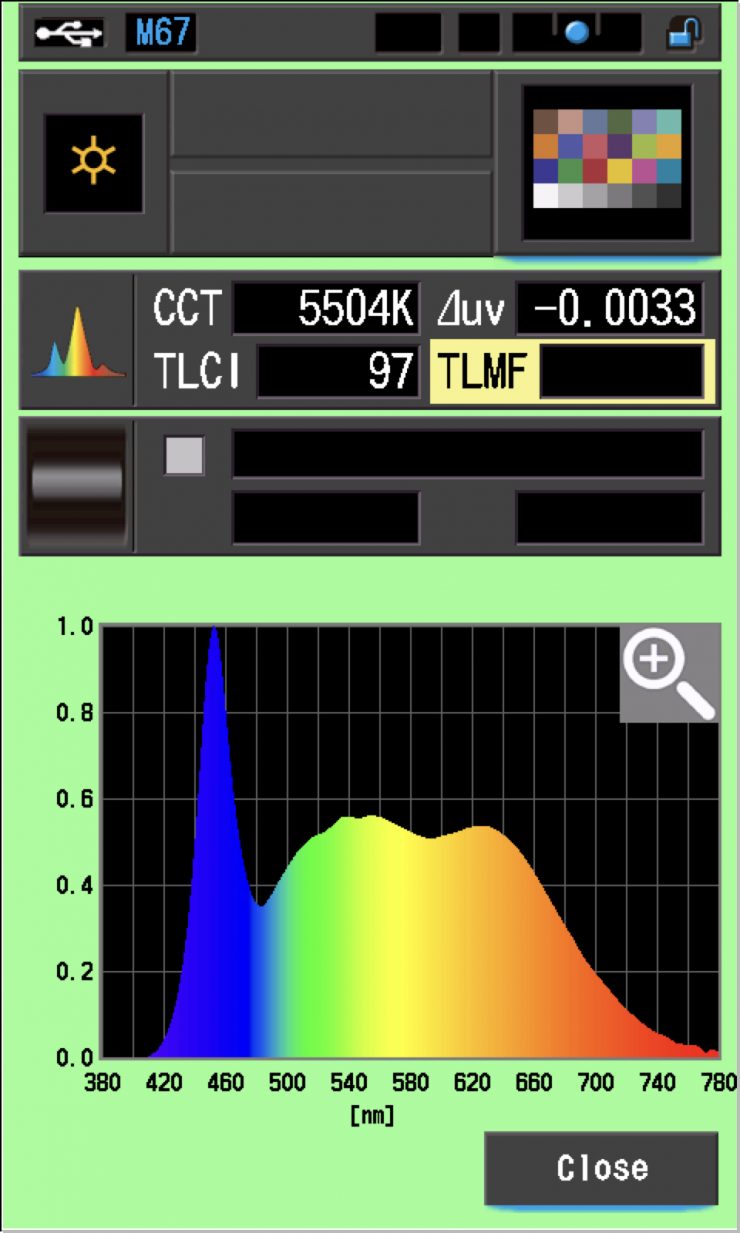
The light, when set at 5600K, recorded a TLCI score of 97.
How does this compare to some other 2×1 RGBW lights that we have previously reviewed when used at 5600K? Below you can see:
| Average CRI | Extended CRI | |
| Lupo SuperpanelPRO Dual Color Hard 60 | 96.6 | 95.12 |
| Lupo HyperpanelPRO Dual Color Hard 60 | 96.0 | 93.06 |
| Creamsource Vortex8 | 96.2 | 94.24 |
| Rotolight Titan X2 | 96.8 | 95.21 |
| ARRI SkyPanel S60-C | 95.7 | 92.92 |
| Litepanels Gemini 2×1 | 95.2 | 93.24 |
| Luxli Taiko | 97.6 | 95.8 |
| Rayzr MC MAX 400 | 95.3 | 92.96 |
All of these lights perform well at 5600K.
3200K
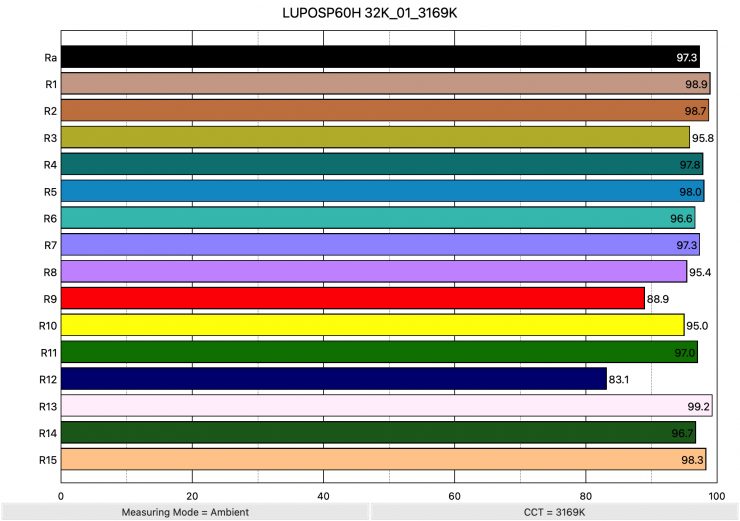
Above you can see that when the light was set at 3200K it recorded an average CRI (R1-R8) of 97.3 and an extended CRI (R1-R15) of 95.78. For replicating accurate skin tones it recorded for R9 88.9 (red), 99.2 for R13 (closest to caucasian skin tones), and 98.3 for R15 (closest to Asian skin tones). These were excellent results, with only R12 (Blue) and R9 (Red) being below 90. In saying that R9 (Red was only just below 90 with a score of 88.9.
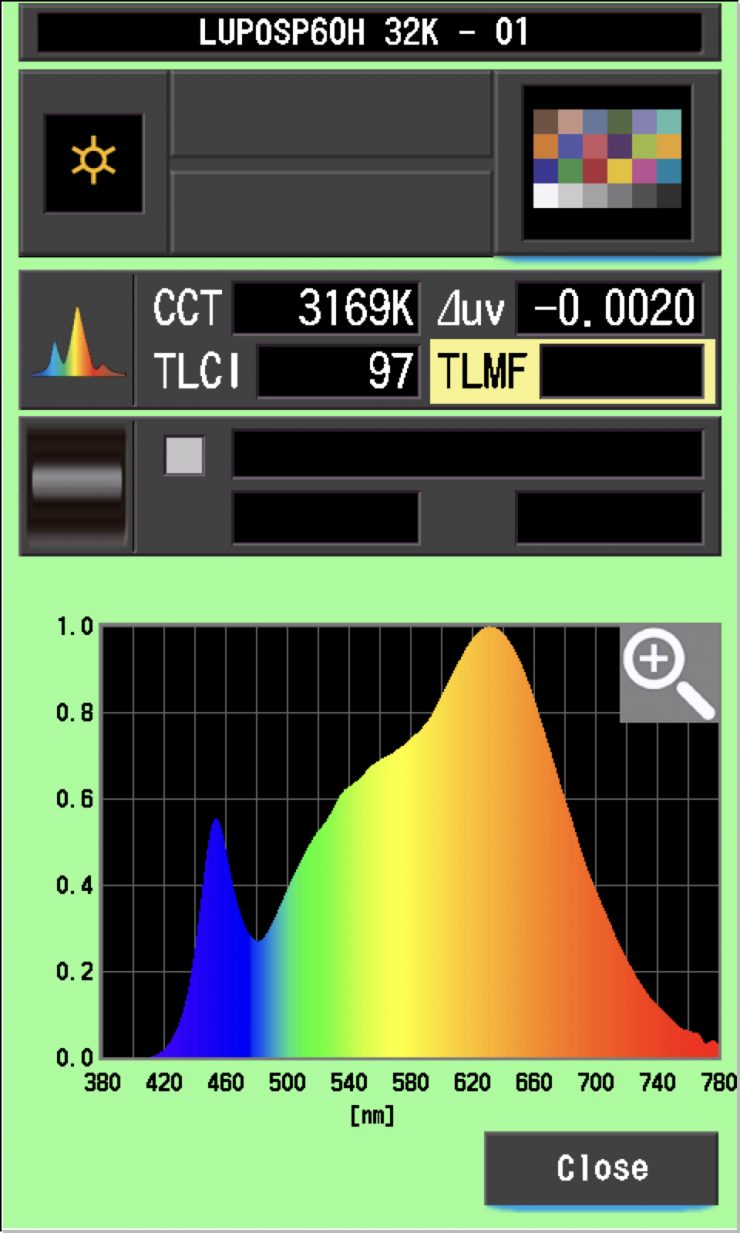
The light, when set at 3200K, recorded a TLCI score of 97.
How does this compare to some other 2×1 RGBW lights that we have previously reviewed when used at 3200K? Below you can see:
| Average CRI | Extended CRI | |
| Lupo SuperpanelPRO Dual Color Hard 60 | 97.3 | 95.78 |
| Lupo HyperpanelPRO Dual Color Hard 60 | 94.0 | 91.89 |
| Cteamsource Vortex8 | 97.1 | 95.82 |
| Rotolight Titan X2 | 95.9 | 94.27 |
| ARRI SkyPanel S60-C | 96.1 | 94.06 |
| Litepanels Gemini 2×1 | 97.2 | 95.3 |
| Luxli Taiko | 97.7 | 96.8 |
| Rayzr MC MAX 400 | 90.6 | 88.64 |
The Lupo SuperpanelPRO Dual Color Hard 60, Creamsource, Rotolight, Litepanels, and ARRI fixtures are all very close when it comes to color rendering scores. The Luxli Taiko has the highest extended CRI score at 3200K that I have recorded from a 2×1 RGBW light.
Thoughts
I thought that the Lupo SuperpanelPRO Dual Color Hard 60 might have some compromises when it comes to color reproduction due to its high output, however, it performed very well.
What you clearly need to understand, and I want to continue to stress this point, is that all lights react differently to different camera and sensor combinations. One particular light may look better with an ARRI camera, and another light may look better with a Canon camera, etc.
CC Index & ⊿uv
The CC Index displays the CC correction value and whether any magenta or green need to be added or subtracted. 1 CC corresponds to 035 Kodak CC values or 1/8 Rosco filter values. Any reading less than +1.00 or -1.00 and you’re probably not going to need to make any kind of adjustment. The ⊿uv is the value to show how much this light is away from being an ideal light source (black body radiation = incandescent lamp). As with the CC Index you want this number to theoretically be zero. Kelvin is not a linear value, so we need to convert from Kelvin to MK-1 to compare the values of color temperature. To calculate from Kelvin to Mired is MK-1= 1*1000000/Kelvin. While this may sound confusing, it is the only way of measuring if the Kelvin shift is significant enough to warrant having to use a filter for correction. Below are the results for the Lupo SuperpanelPRO Dual Color Hard 60.
Kelvin Vs MK-1
| Kelvin | Difference in K | MK-1 | Difference in MK-1 | |
| SET VALUE | 2800K | 0 | 357.14 | 0 |
| ACTUAL READING | 2866K | 66 | 348.91 | 8.23 MK-1 |
| SET VALUE | 3200K | 0 | 312.5 | 0 |
| ACTUAL READING | 3169K | 31 | 315.55 | -3.05 MK-1 |
| SET VALUE | 4500K | 0 | 222.22 | 0 |
| ACTUAL READING | 4448K | 52 | 224.82 | -2.60 MK-1 |
| SET VALUE | 5600K | 0 | 178.57 | 0 |
| ACTUAL READING | 5504K | 96 | 181.68 | -3.11 MK-1 |
| SET VALUE | 6500K | 0 | 153.84 | 0 |
| ACTUAL READING | 6307K | 193 | 158.55 | -4.71 MK-1 |
These figures might look confusing, but what it tells me is that the light is very CCT-accurate between 3200-5600K. Any MK-1 score that is under -9/9 means you wouldn’t have to use any color correction gels. The MK-1 scores for this light were very good. The scores at 2800K could be better. It is important to keep in mind that these are just technical scores and technical data doesn’t always reflect real-world performance.
CC INDEX & ⊿uv
| CC INDEX | ⊿uv | |
| 2800K | 0.1M | 0.0012 |
| 3200K | 0.1G | -0.0020 |
| 4500K | 0.4G | -0.0049 |
| 5600K | 0.4G | -0.0033 |
| 6500K | 0.4G | -0.0015 |
The ⊿uv scores were ok for this light, but the Creamsource Vortex8 and Rotolight Titan X2 have far better scores.
TM-30
TM-30 is a relatively new color rendering standard that was developed to deal with the limitations of CRI. TM-30 looks at 99 individual colors. These 99 colors are categorized into seven groups: nature, skin color, textiles, paints, plastics, printed material, and color systems.
TM-30 scores go from 0 – 100. The higher the score, the more accurate a light is at producing colors. Any TM-30 Rf score in the ’90s is considered to be good. What is interesting and something that you need to be very aware of is that two separate light sources with the exact same CRI scores can render colors very differently. A light with a high CRI rating could have a low TM-30 score. Conversely, a light with a good TM-30 score could have a bad CRI score.
Now, there are two measurements associated with TM-30, Rf and Rg.
- Rf (Color Fidelity)
- Rg (Color Gamut)
With Rf value, ideally, you want a score in the 90’s.
With Rg value, a score below 100 indicates that the light source renders colors with less saturation than the reference source. So ideally you want this score to be above 100.
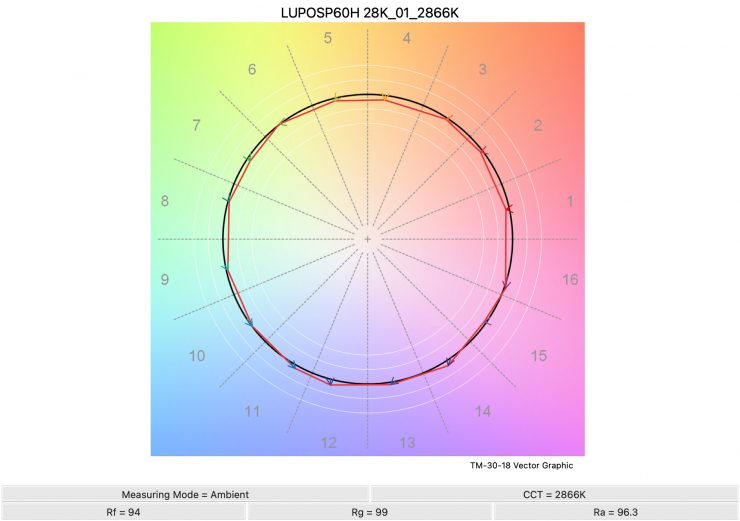
2800K 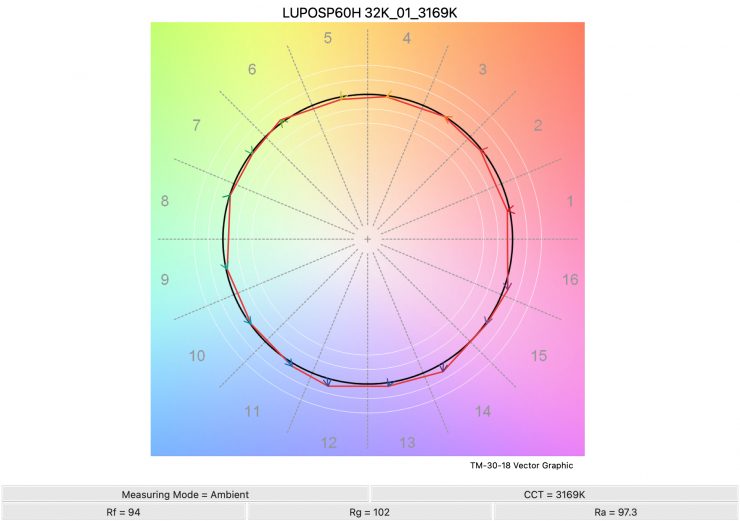
3200K 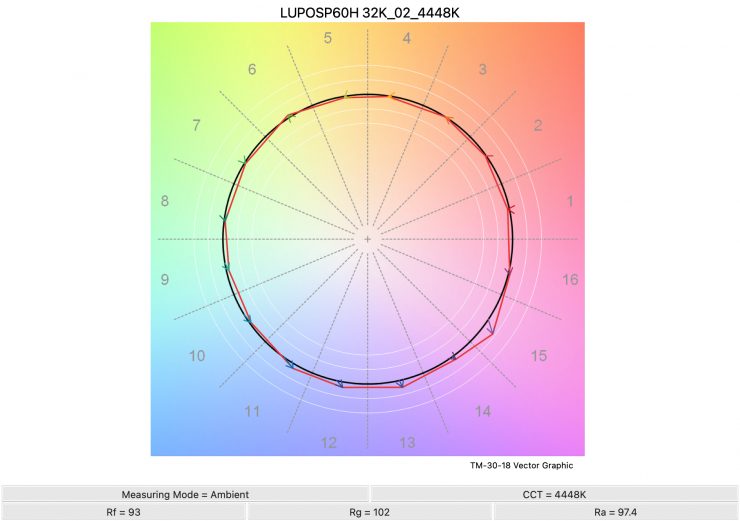
4500K 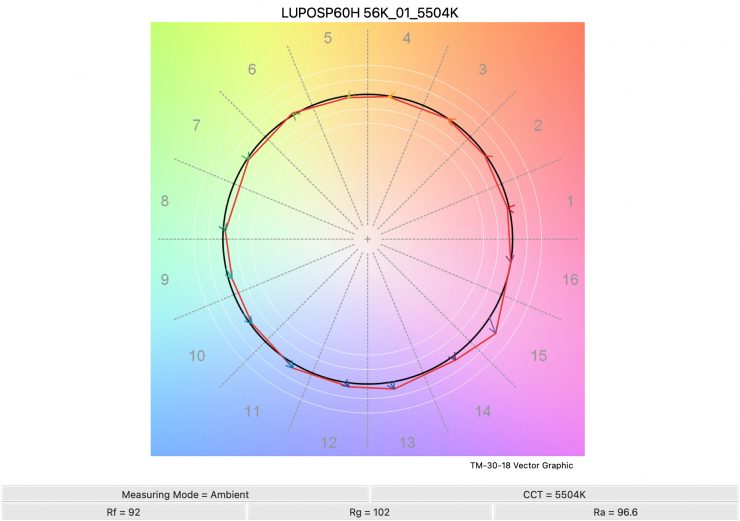
5600K 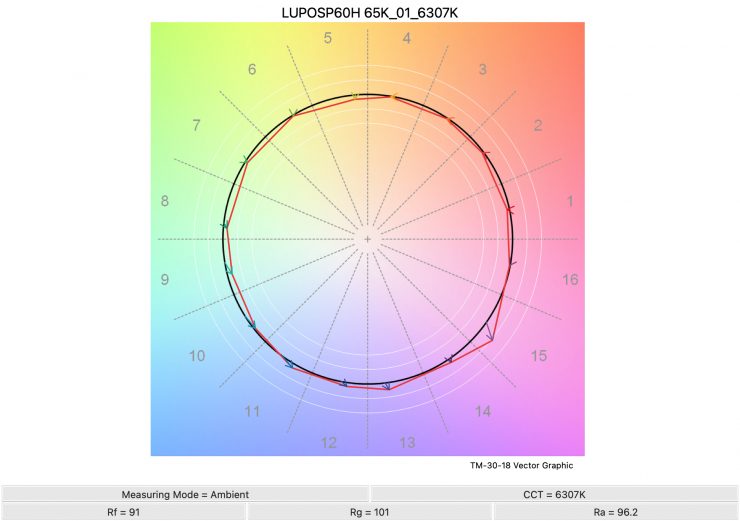
6500K
Above you can see the scores for the Lupo at various Kelvin color temperatures.
Here are the results:
| Rf | Rg | |
| 2800K | 94 | 99 |
| 3200K | 94 | 102 |
| 4500K | 93 | 102 |
| 5600K | 92 | 102 |
| 6500K | 91 | 101 |
The Rf and Rg scores are reasonably consistent from 2800K to 6500K.
SSI
SSI (Spectral Similarity Index) was developed by the Sci-Tech Council of the Academy. SSI gives me the ability to set any light as a standard, or use predefined standards (such as CIE D55), and then give other lights an SSI score based on how well they will match standards such as CIE D55. This way I can measure spectral response and compare it directly against an ideal light source. This is actually a much better test than recording CRI scores.
3200K
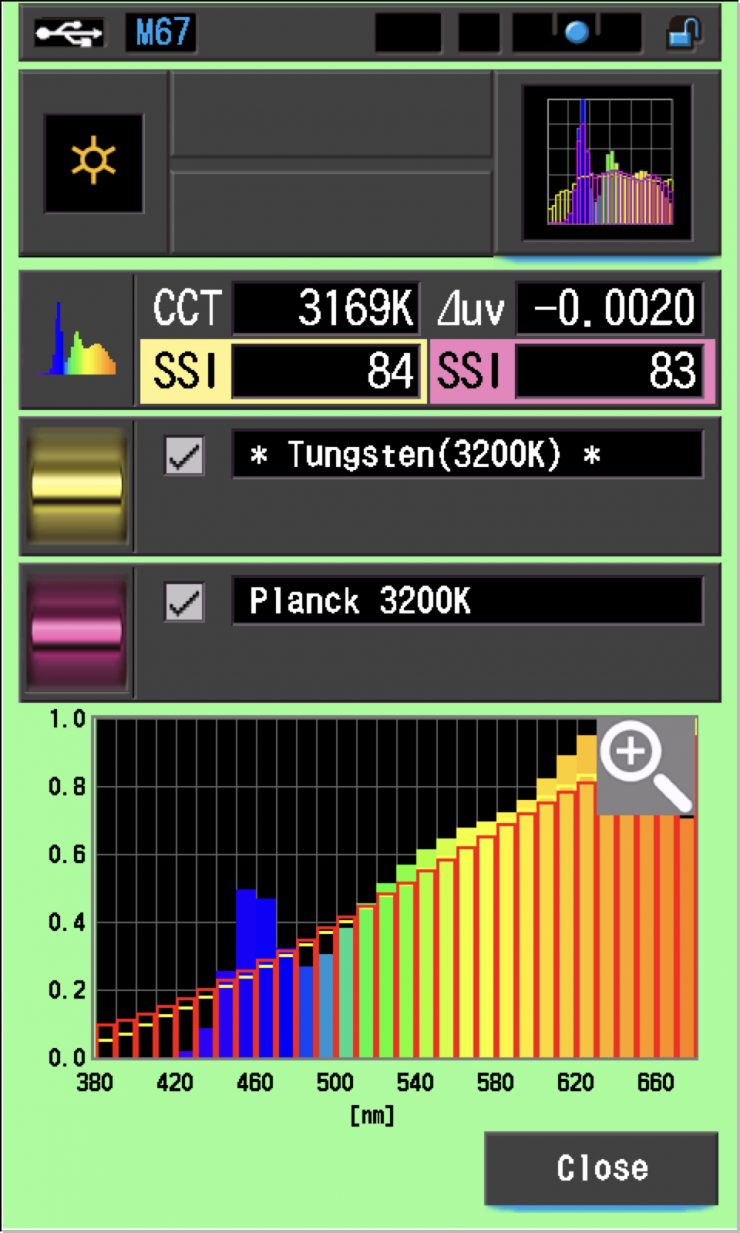
In this graph, the red bars indicate a perfect Planck 3200K source. The gold bars indicate a perfect 3200K Tungsten source. This lets us compare how close to a perfect 3200K lighting source the Lupo SuperpanelPRO Dual Color Hard 60 is. Any SSI score in the ’80s is very good for a 3200K LED light. As you can see, LED lights have a hard time replicating colors below about 450nm.
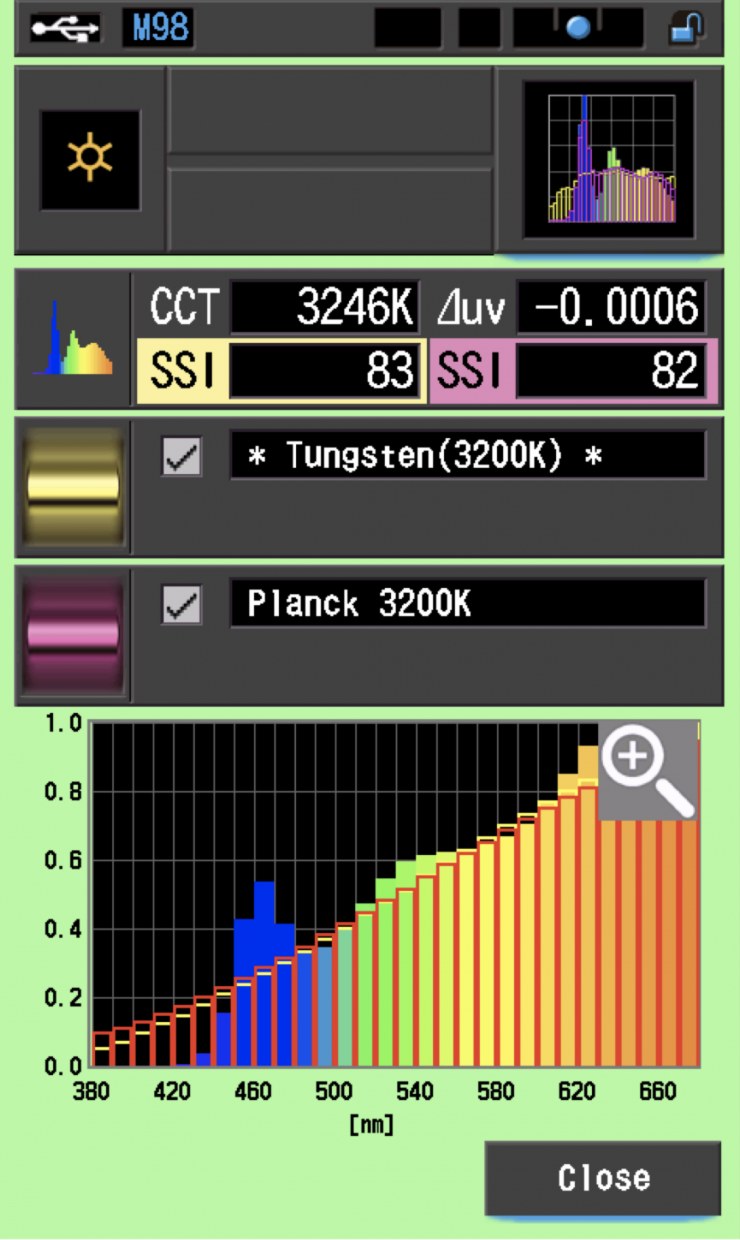
As a comparison, above you can see the same scores for the Rotolight Titan X2. The Lupo actually had higher SSI scores at 3200K than the Rotolight.
5600K
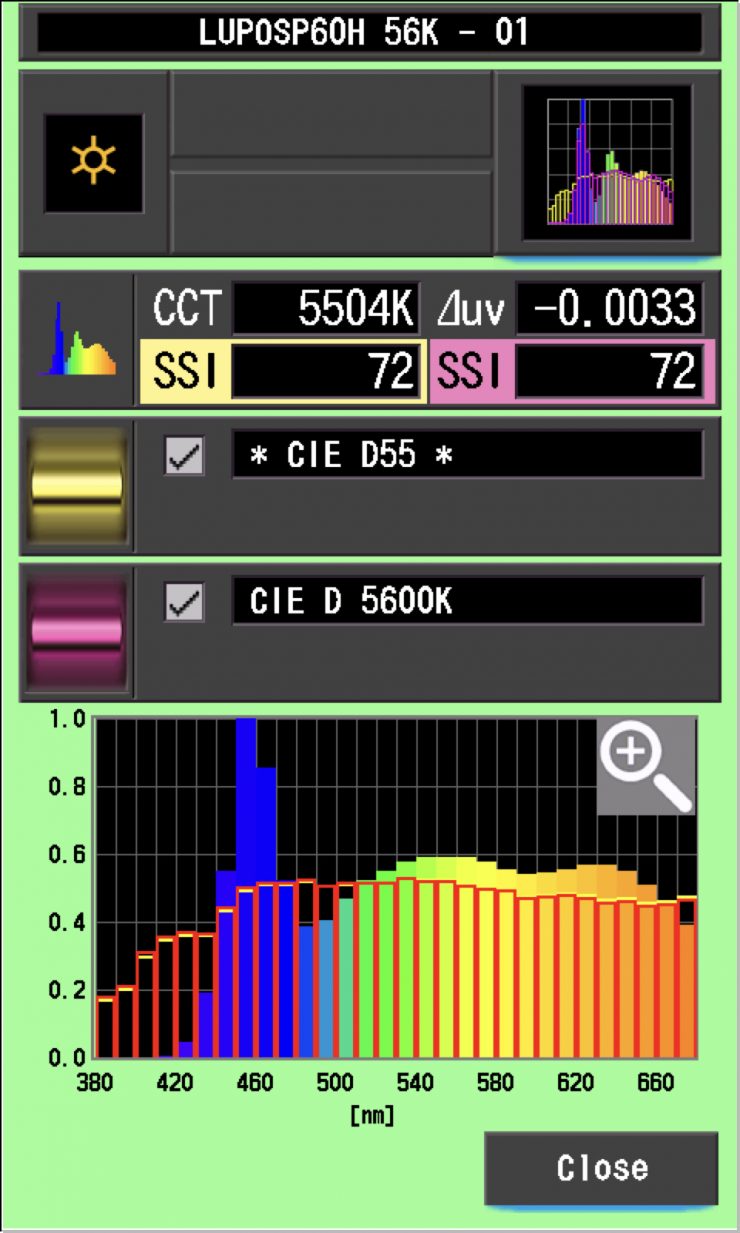
In the graph above the gold bars indicate a perfect CIE D55 source. The red bars indicate a perfect CIE D 5600K source. This lets us compare how close to a perfect 5600K lighting source the Lupo SuperpanelPRO Dual Color Hard 60 is. A score in the low 70’s is typical for a 5600K LED source.
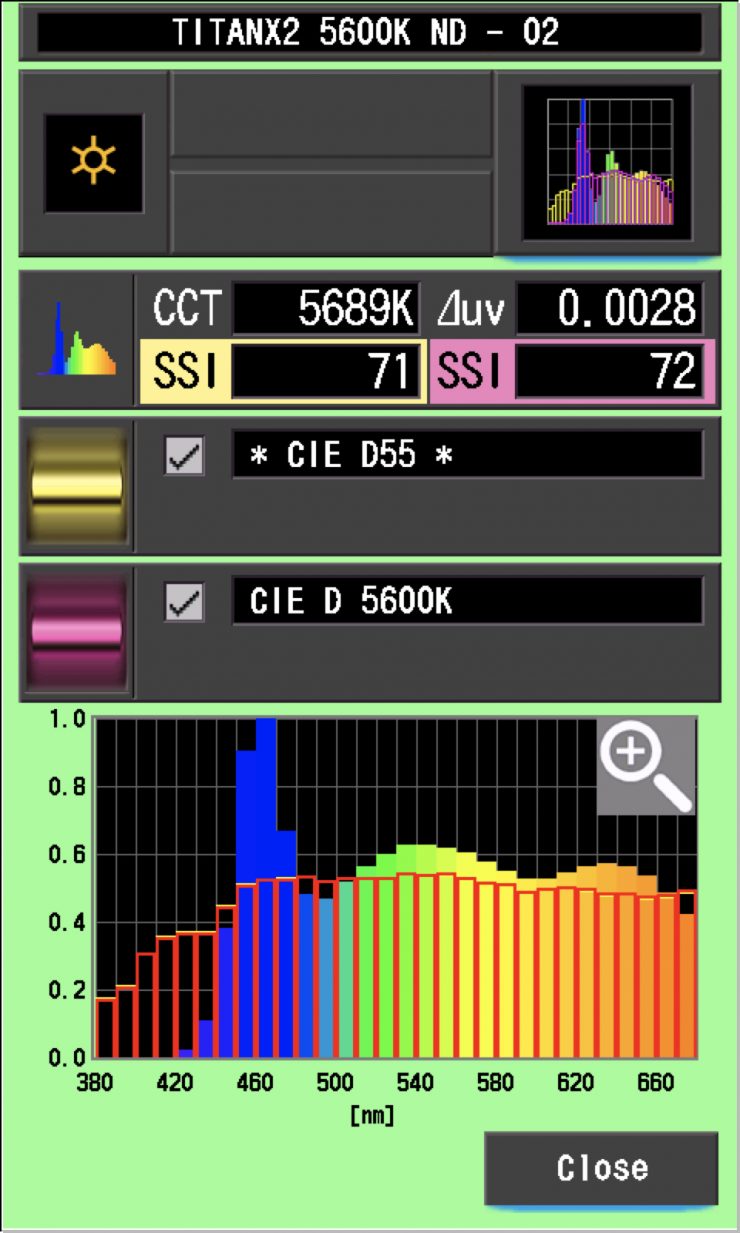
Again, as a comparison, above you can see the same scores for the Rotolight Titan X2.
The main reason we want to record SSI scores is so we can see how well they match with other lights. As a test, I was curious to see how well the Lupo SuperpanelPRO Dual Color Hard 60 matched an ARRI Orbiter and the more affordable ZHIYUN MOLUS G300. Below you can see the results.
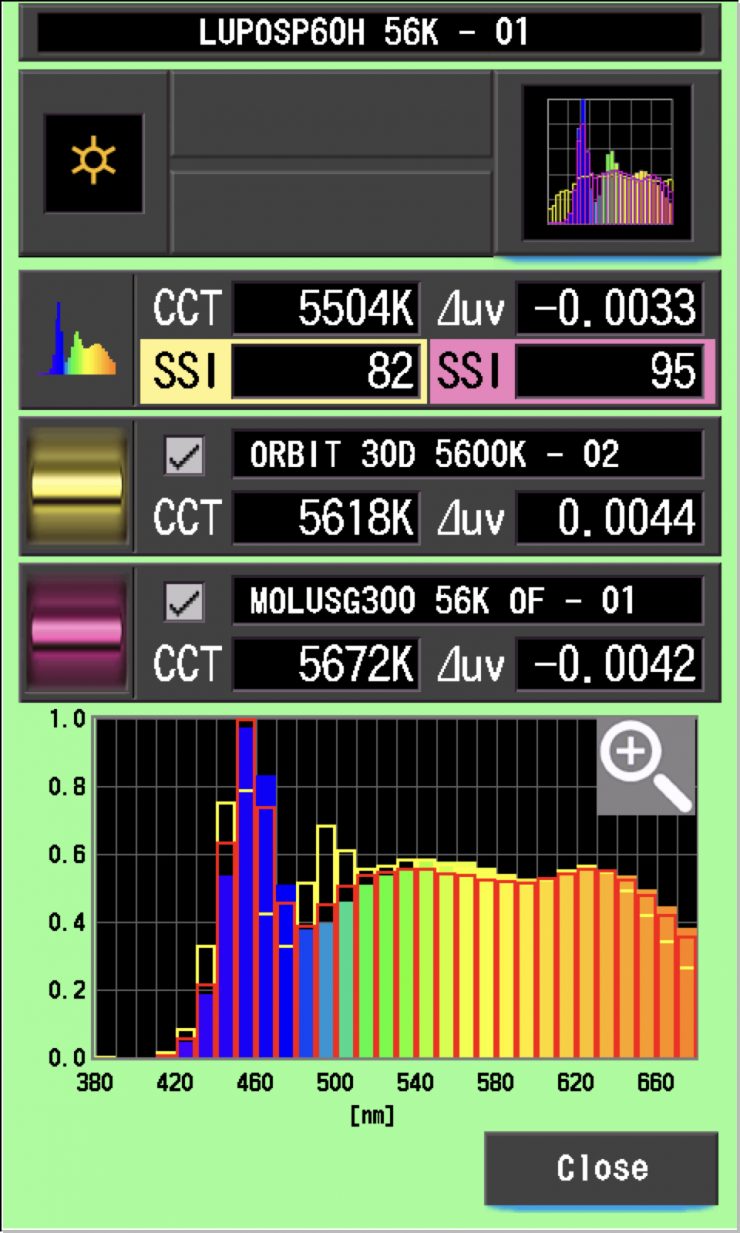
As you can see the ARRI Orbiter isn’t close to being a perfect match to the Lupo SuperpanelpanelPRO Dual Color Hard 60, but the ZHIYUN MOLUS G300 is pretty close.
Ok, so now let’s do that same comparison at 3200K.
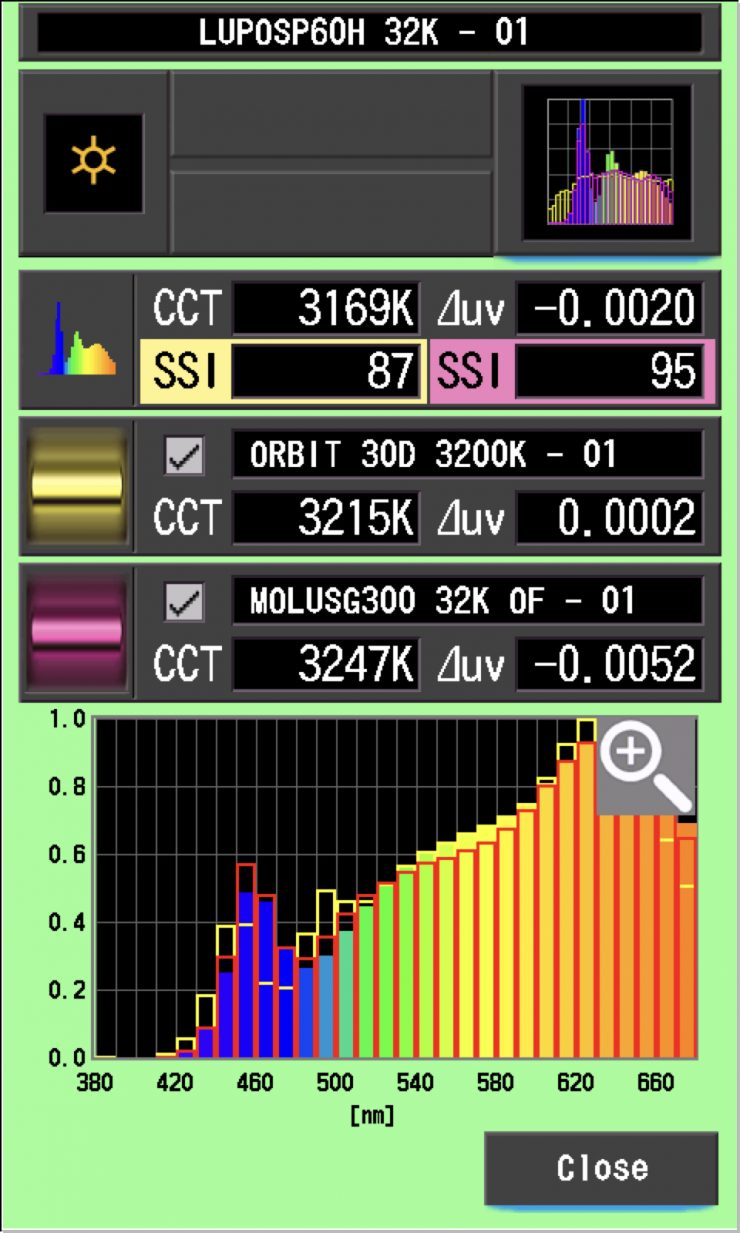
Again, just like at 5600K, the Lupo SuperpanelPRO Dual Color Hard 60 was a better match to the ZHIYUN MOLUS G300 than the ARRI Orbiter.
As another test let’s see how the Lupo SuperpanelPRO Dual Color Hard 60 matches itself when used with a DoPchoice SNAPBAG and against its bigger brother the Lupo HyperpanelPRO Dual Color Hard 60.
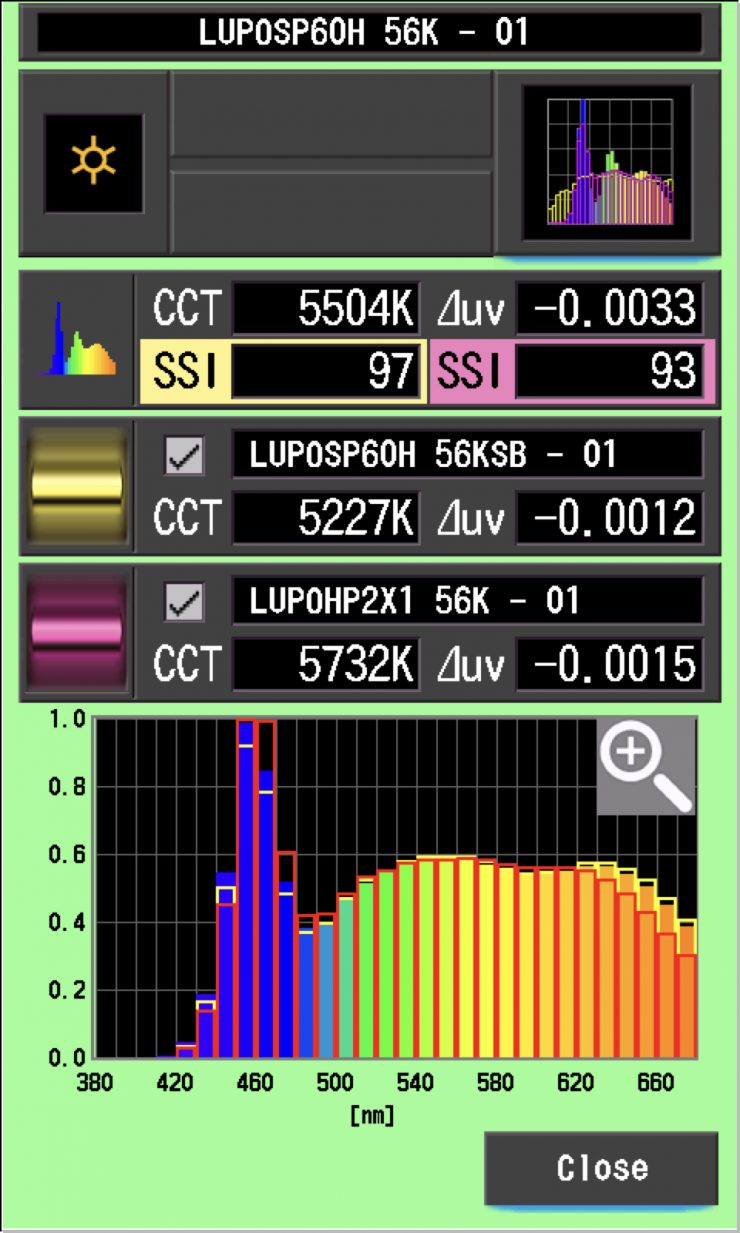
As you can see, the light wasn’t a perfect match to itself when using the DoPchoice SNAPBAG, but it was pretty close. When compared to the Lupo HyperpanelPRO Dual Color Hard 60 it wasn’t as close of a match as I would have thought, however, you could tweak the lights to get a closer match.
SSI tests are a great way of telling you what lights you own or use will work well together. Having a device like the Sekonic C-800 lets you get the data you need to be able to fine-tune your lights to get them to more closely match.
Spectral Distribution
5600K
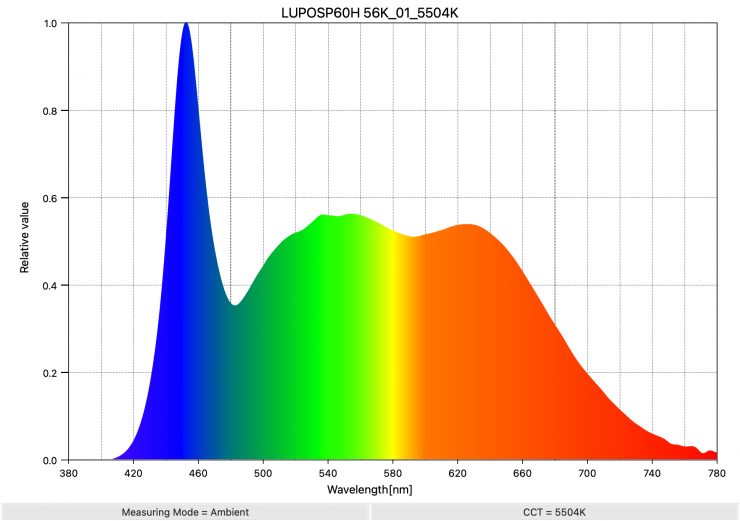
Above you can see the spectral distribution of the Lupo SuperpanelPRO Dual Color Hard 60 when it is set at 5600K. As you can clearly see the light doesn’t have a very full spectrum like RGBW fixtures.
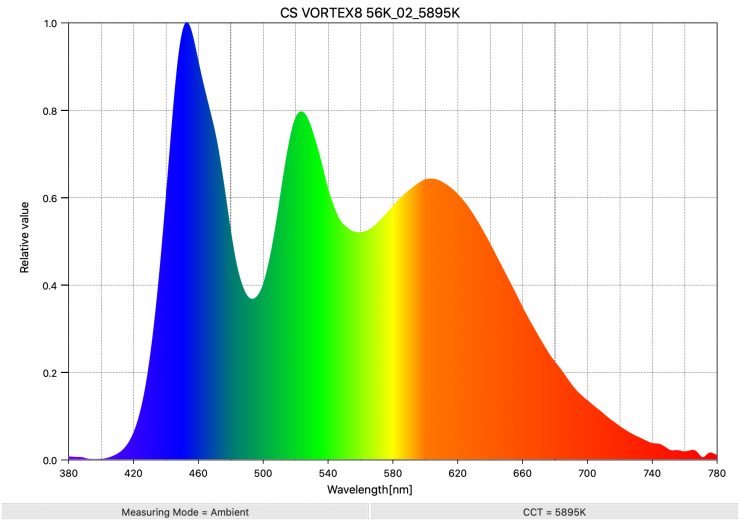
As a comparison, above you can see the spectral distribution of the Creamsource Vortex8 when it is set at 5600K. The spectral distribution is reasonably full although there are some spikes.
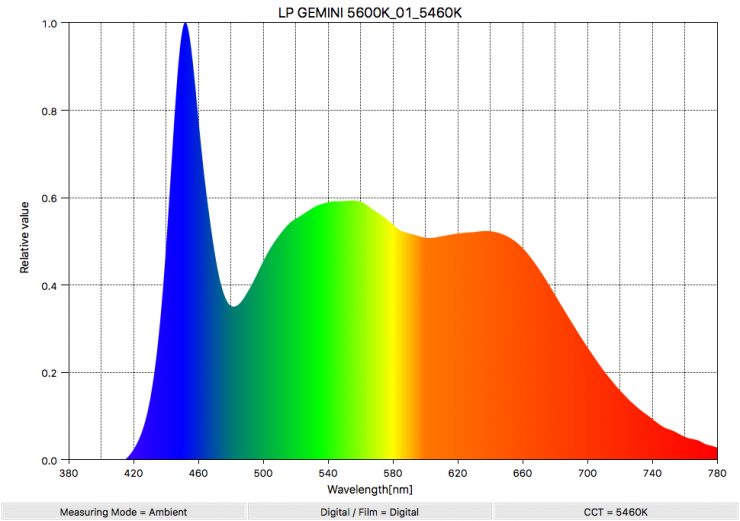
As another comparison, above you can see the spectral distribution of the Litepanels Gemini 2×1 when it is set at 5600K.
3200K
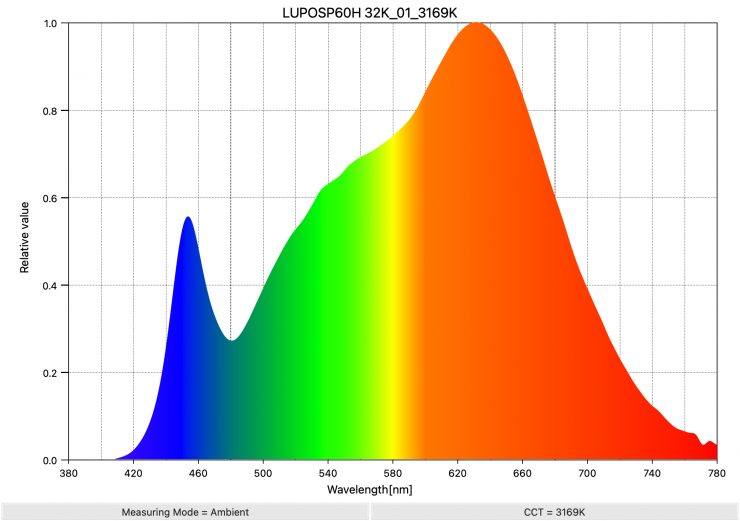
Above you can see the spectral distribution of the Lupo SupererpanelPRO Dual Color Hard 60 when it is set at 3200K. The light has a nice even spectrum.
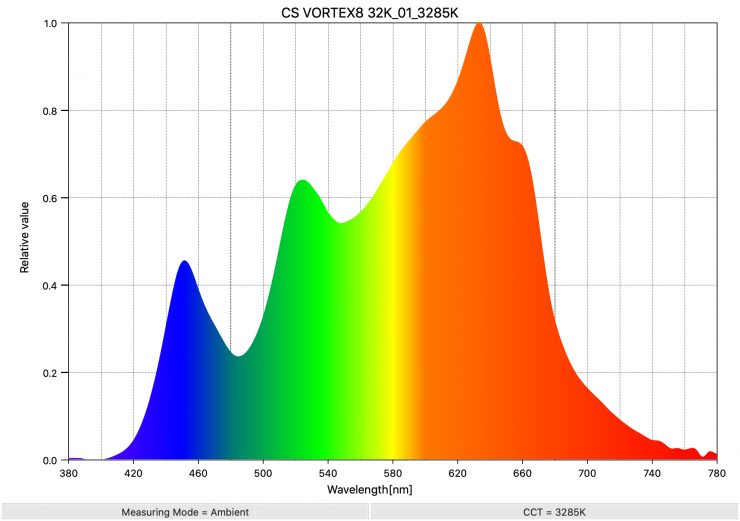
As a comparison, above you can see the spectral distribution of the Creamsource Vortex8 when it is set at 3200K.
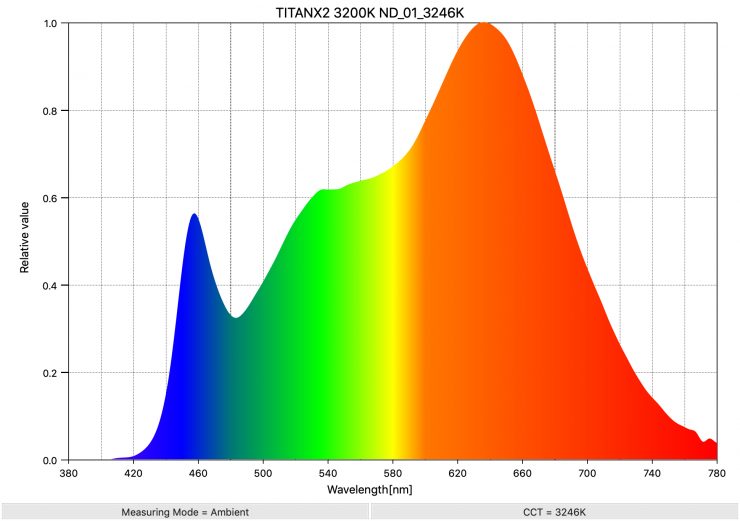
As a comparison, above you can see the spectral distribution of the Titan X2 when it is set at 3200K. The spectral distribution has a slight push towards green and it’s also missing some color information in parts of the spectrum. Although, with +/- Green adjustment you could easily correct this.
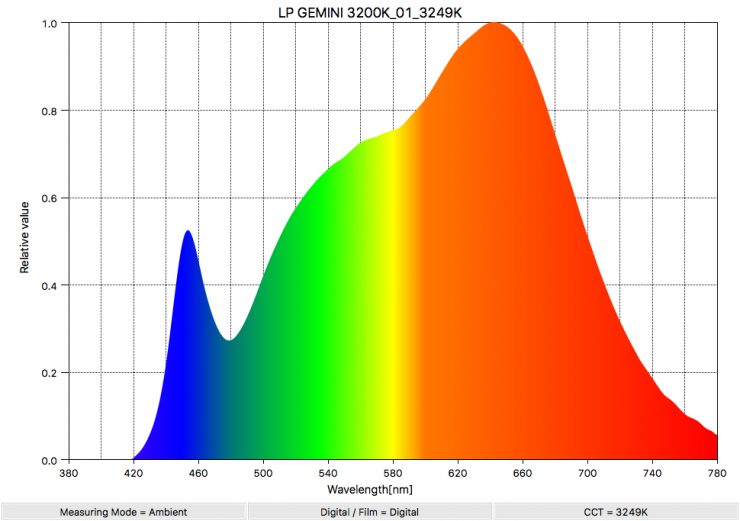
As another comparison, above you can see the spectral distribution of the Litepanels Gemini 2×1 when it is set at 3200K. As you can see, the Litepanels has a fuller spectrum when used at 3200K.
Real World Performance and Quality of Light
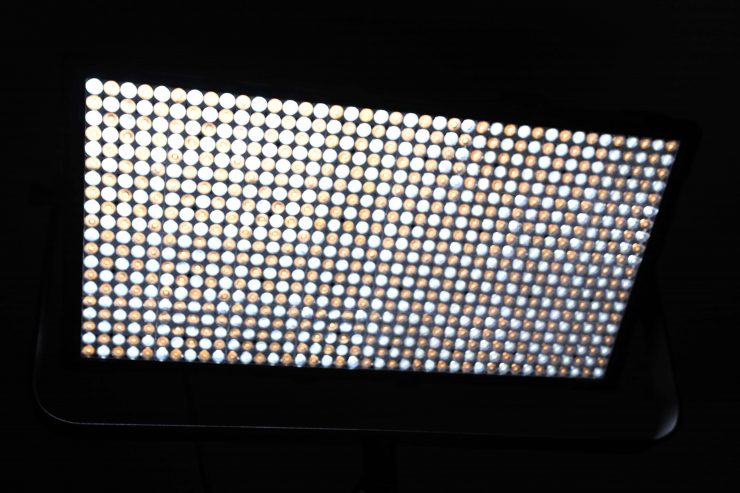
As I always say, photometric scores only tell you part of the story. So how do the scores from the Lupo SuperpanelPRO Dual Color Hard 60 translate into real-world performance? The light has a good amount of output and that allows it to be used for a variety of different applications.
I was very impressed with the real-world performance of the light. Not only could it match bright backgrounds outdoors, but the light still remained quite soft and didn’t look overly forced. This is something that is often hard to do if you are using a Fresnel-style HMI light.
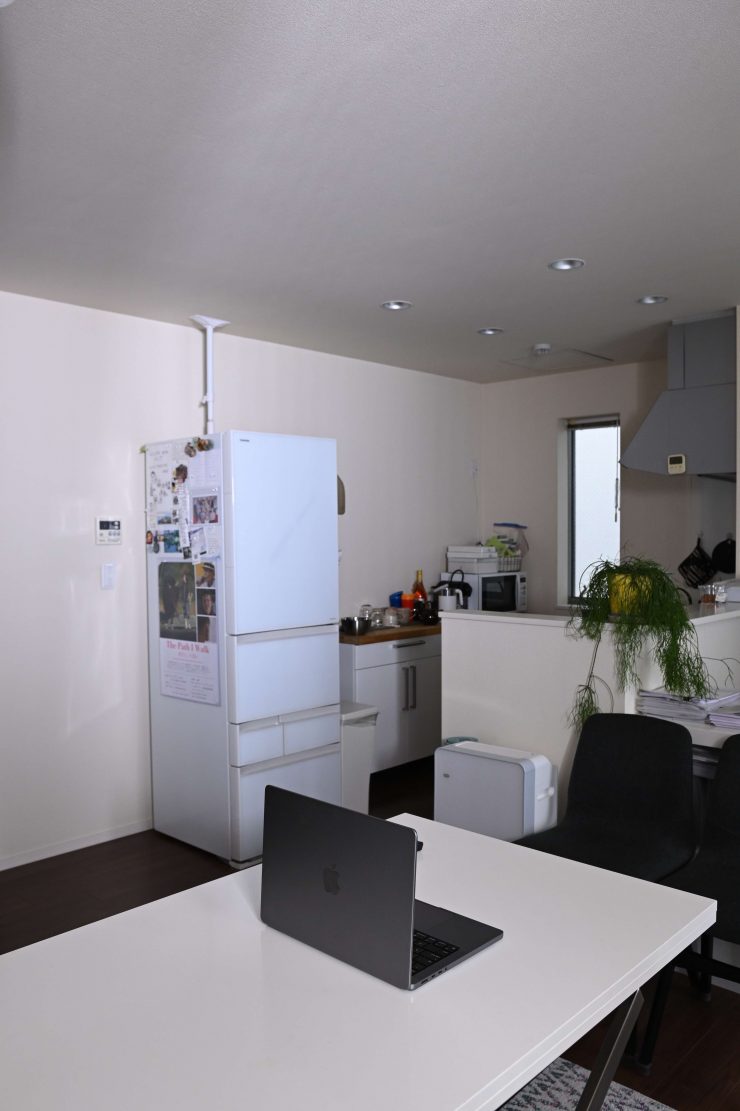
Light On 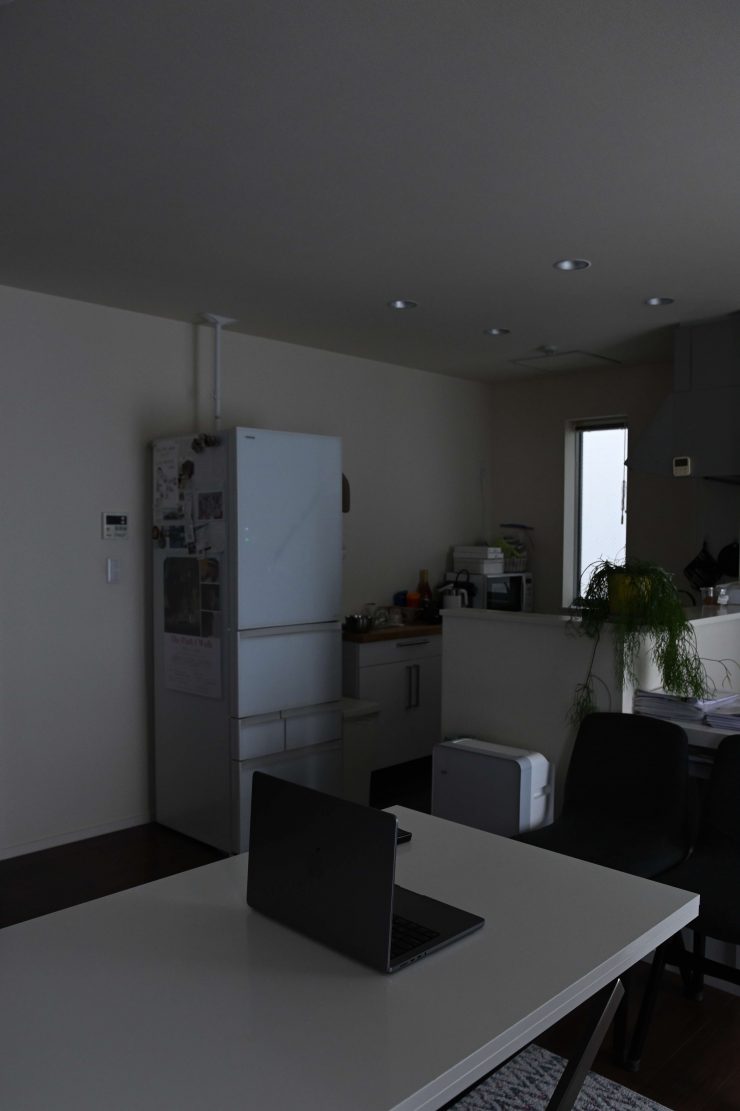
Light Off
Above you can see what the light looks like when it is placed outside and blasted through a window and a curtain sheer. I have kept the camera settings the same for both shots.
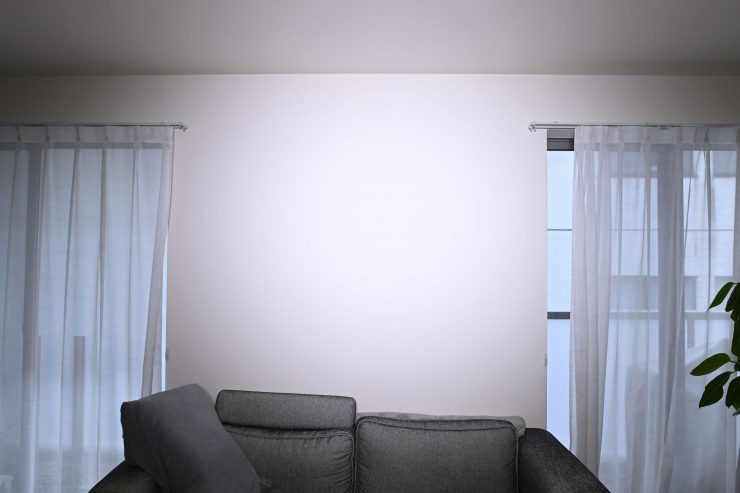
Light On 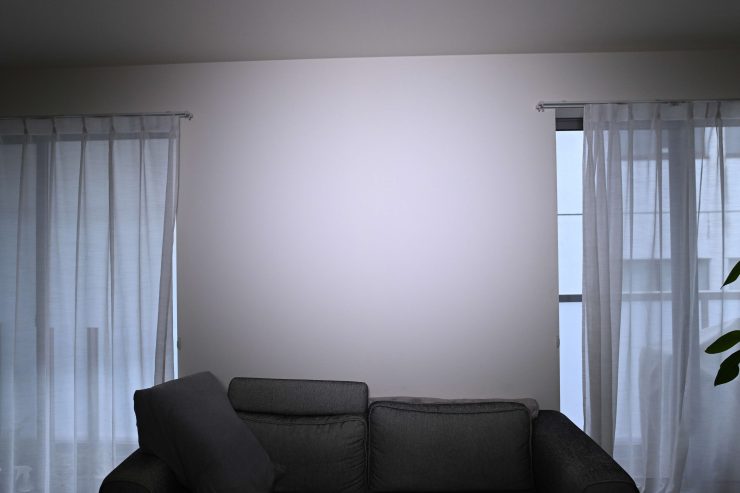
Light On & Fan Off 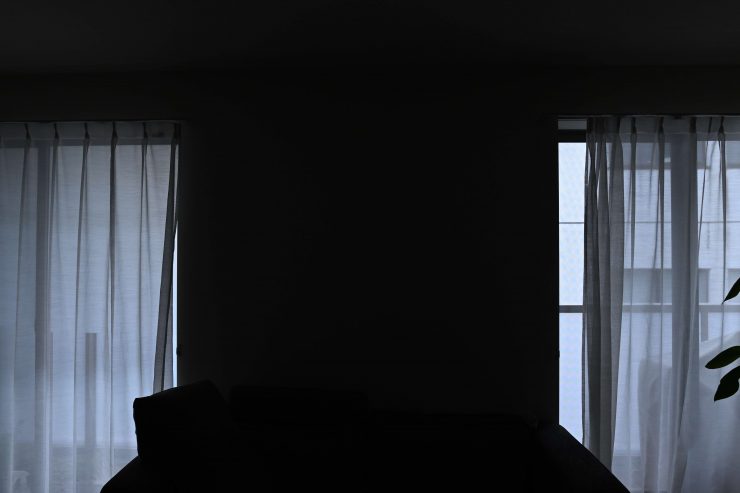
Light Off
Above you can see what the output and beam spread of the light is like when it is placed 3m /9.9″ from a wall. I have kept the camera settings the same for all of the shots.
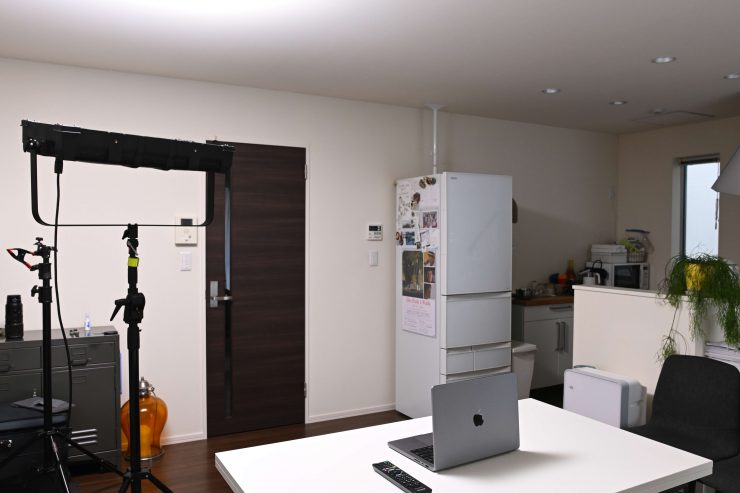
Above you can see what the light looks like when it is punched directly into the ceiling.
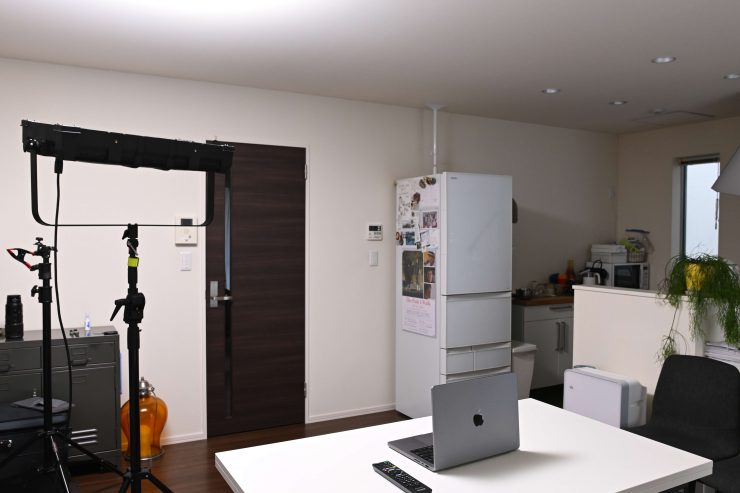
Light On 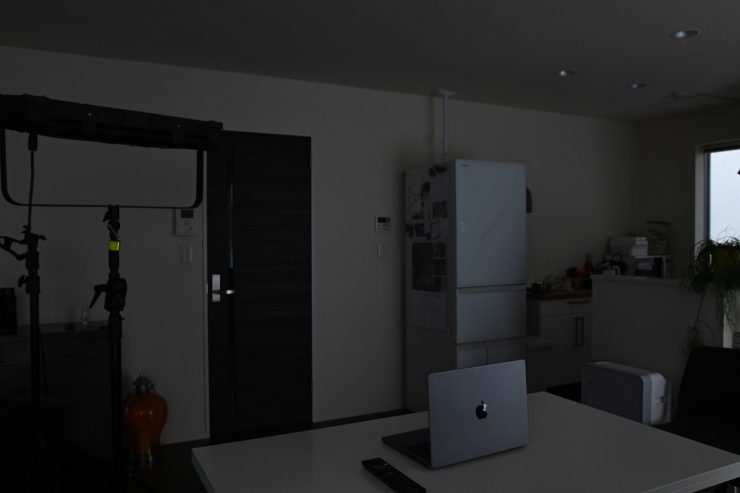
Light Off
Above you can see what the light looks like being punched directly into the roof.
Above you can see what the light looks like being punched directly down onto a table.
I also tried the light out with a DoPChoice SNAPBAG and it was able to create a nice soft lighting source that still had plenty of punch.
Starting with an incredibly bright source allows the Dual Color 60 to be used as both a hard or a soft light depending on what you require. In some ways, this makes the light more versatile than if it had a built-in diffusion panel. If you don’t have a high enough output to begin with, and then attempt to heavily diffuse that lighting source, often the brightness of that light is reduced to a point where it’s only usable when placed very close to a subject. This is the main advantage the Lupo. It has so much output that you can heavily diffuse it and place it a long way away from your subject.
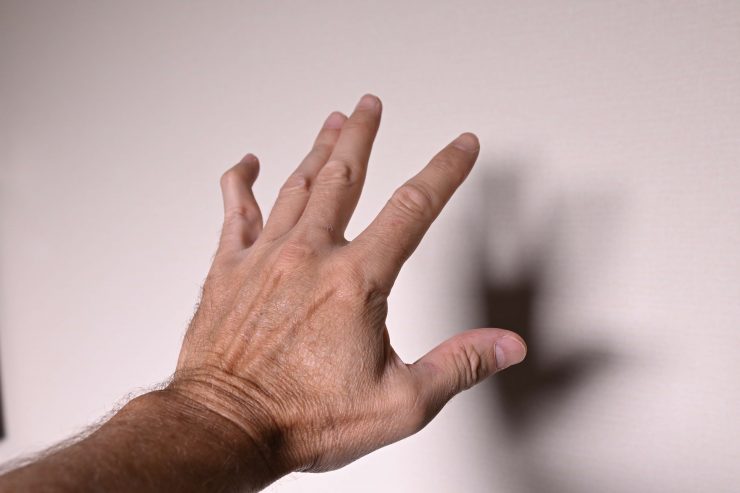
You will get some hatched shadows when the light isn’t used with any diffusion.
The LUPO’s high output for a 2×1 light and lack of an in-built diffusion panel really mean you have to heavily diffuse it if you want to create a soft lighting source.
Price
The Lupo SuperpanelPRO Dual Color Hard 60 retails for $1,790 USD.
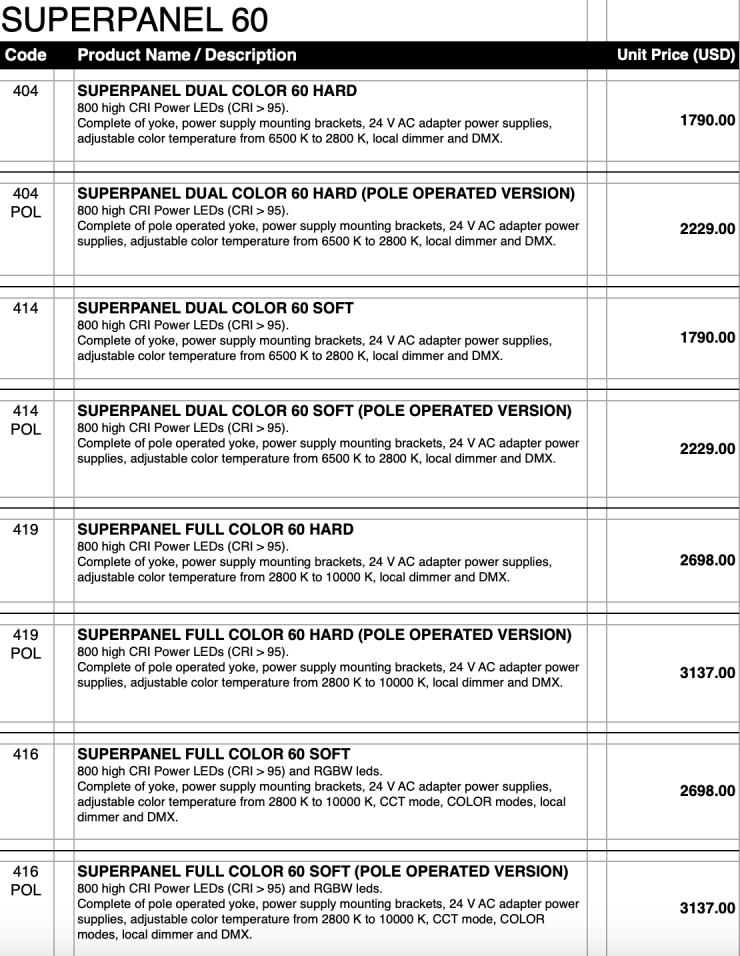
Above you can see the prices for the various configurations that are available.
Competition
There are quite a few 2×1 panel lights on the market. I’m not going to try and list them all, but here are a few that could be considered the competition:
| PRICE | |
| Lupo SuperpanelPRO Dual Color Hard 60 | $1,790 USD |
| Lupo HyperpanelPRO Dual Color Hard 60 | $2,198 USD |
| Litepanels Gemini 2×1 Hard RGB LED Light Panel | $3,488.50* |
| ARRI SkyPanel X21 Modular LED Panel | $5,950 USD |
| Rotolight Titan X2 | $2,999.30 USD* |
| Godox KNOWLED P600R | $3,180 USD |
| Creamsource Vortex8 | No Longer Available |
| Nanlux Dyno 650C | $4,070 USD |
| Aputure Nova P600c | $2,550 USD* |
| Luxli Taiko | $1,449 USD* |
| Velvet EVO 2 | $3,887.30 USD |
| SUNNYXIAO CASTER C02P | $3,339 USD |
| Fluotec CineLight Color60 2×1 | $2,811 USD |
*Currently on sale at B&H (as of the 13th June 2024)
As you can see, the Lupo SuperpanelPRO Dual Color Hard 60 is very well-priced compared to its direct competition, but you also need to remember that it doesn’t offer a lot of the same functionality as some of these other fixtures.
Accessories
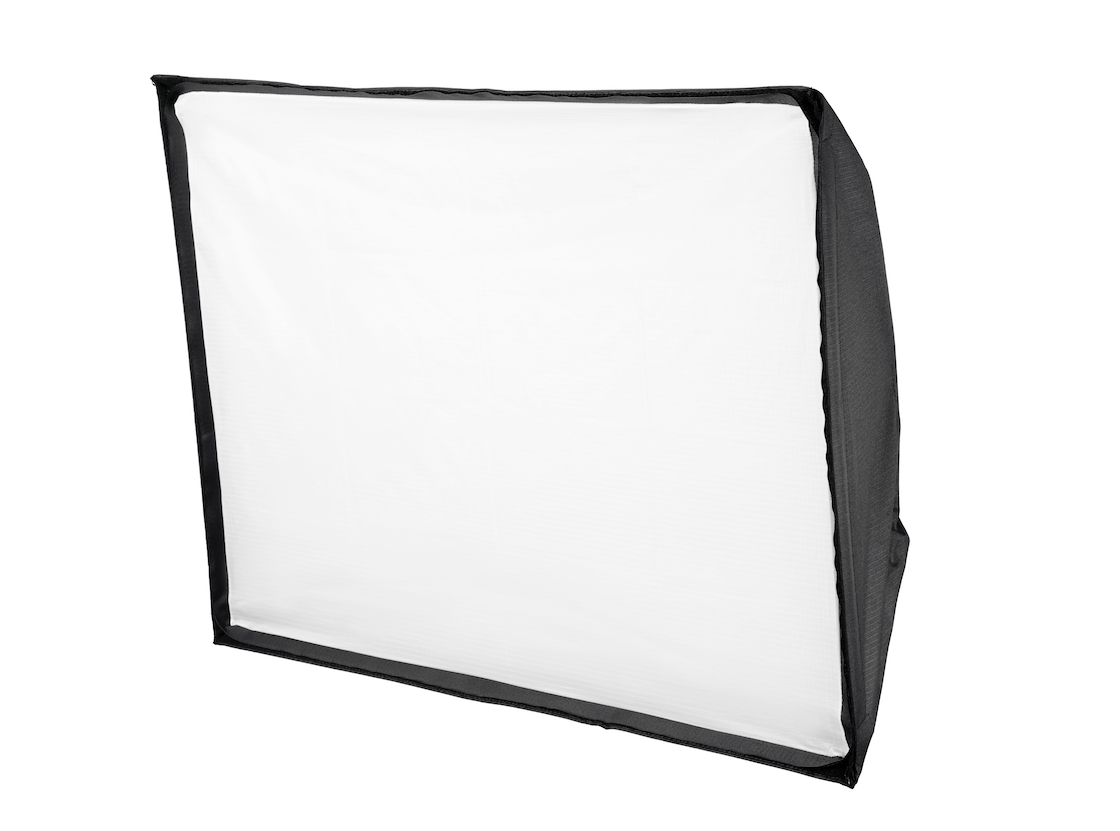
Lupo makes a large range of accessories for the SuperpanelPRO Dual Color Hard 60. The company has the following accessories available:
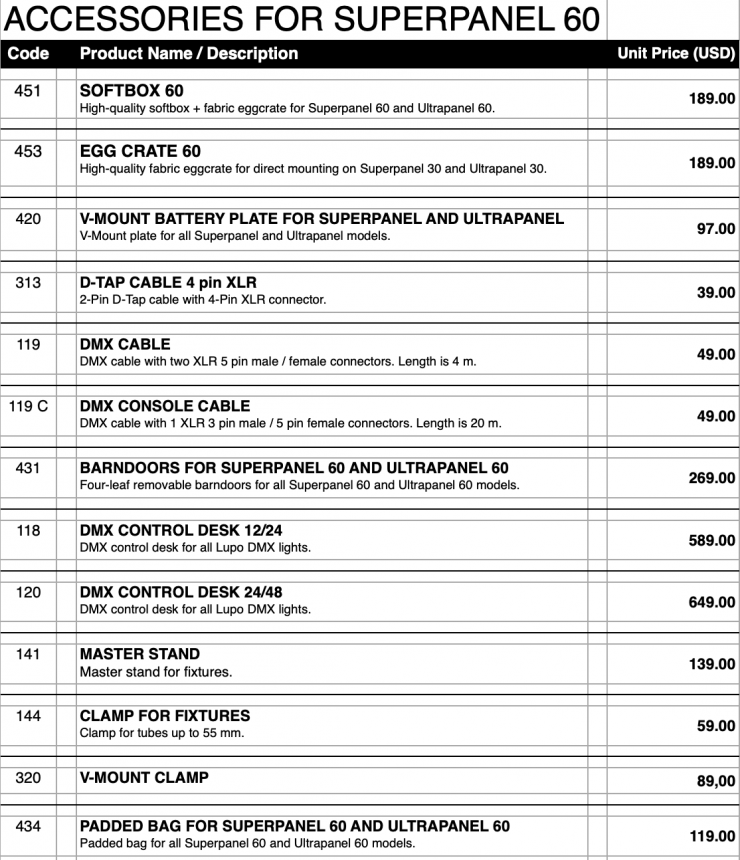
The accessories are reasonably well-priced.
Conclusion
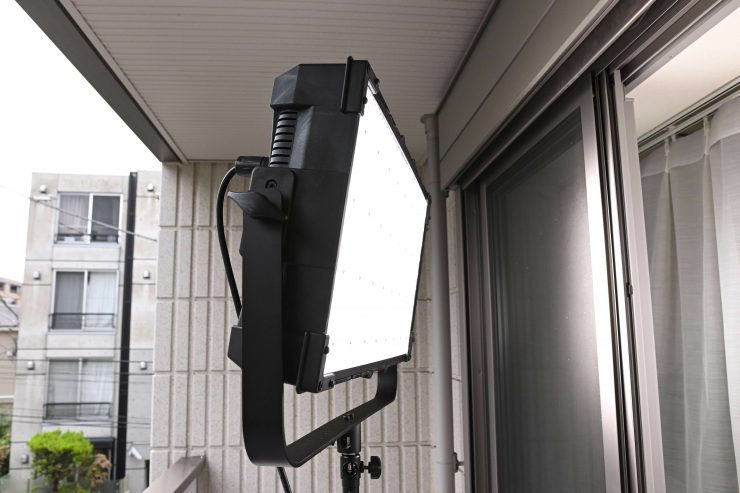
The SuperpanelPRO Dual Color Hard 60 offers excellent value for money and its output is extremely impressive for a 2×1 fixture with a power draw of 440W.
It is a great alternative to a lot of other 2×1-sized lights and it is reasonably lightweight when you compare it to a lot of its competition. Having an all-in-one fixture with a built-in power supply is convenient, as the ability to power it via camera batteries. The $1,790 USD price makes it an attractive proposition if you need to produce a lot of light.
It is solidly made, easy to use, and set up, and its photometric scores were impressive.
Again as I have mentioned numerous times, you do need to be aware of the higher power draw of this light compared to its predecessor and you will have to use an appropriate battery solution to remotely power it. However, in saying that, it is nice that you can run the light remotely at around 70% output from two flight-safe batteries.
The operating system is pretty basic, but it is great that Lupo now has an app that you can use to control the light.
The thing that impressed me the most about the Lupo, apart from its high output, was its ability to be used in so many different ways. You can use it as a hard source or diffuse it to create a softer one.
Lupo continues to do an outstanding job with their new fixtures, and the SuperpanelPRO Dual Color Hard 60 is another impressive offering. With a good amount of output, the ability to run it via 14.8V batteries, good build quality, and a very attractive price, this light is an excellent solution if you are looking for a high-output 2×1 fixture that won’t empty your wallet.

